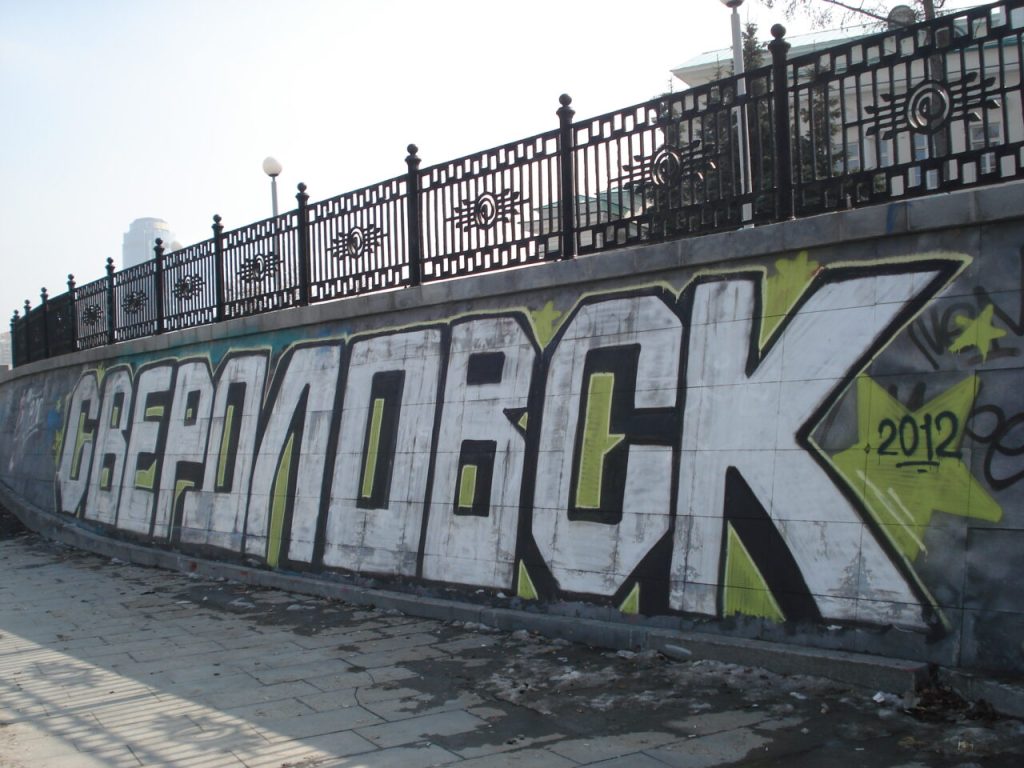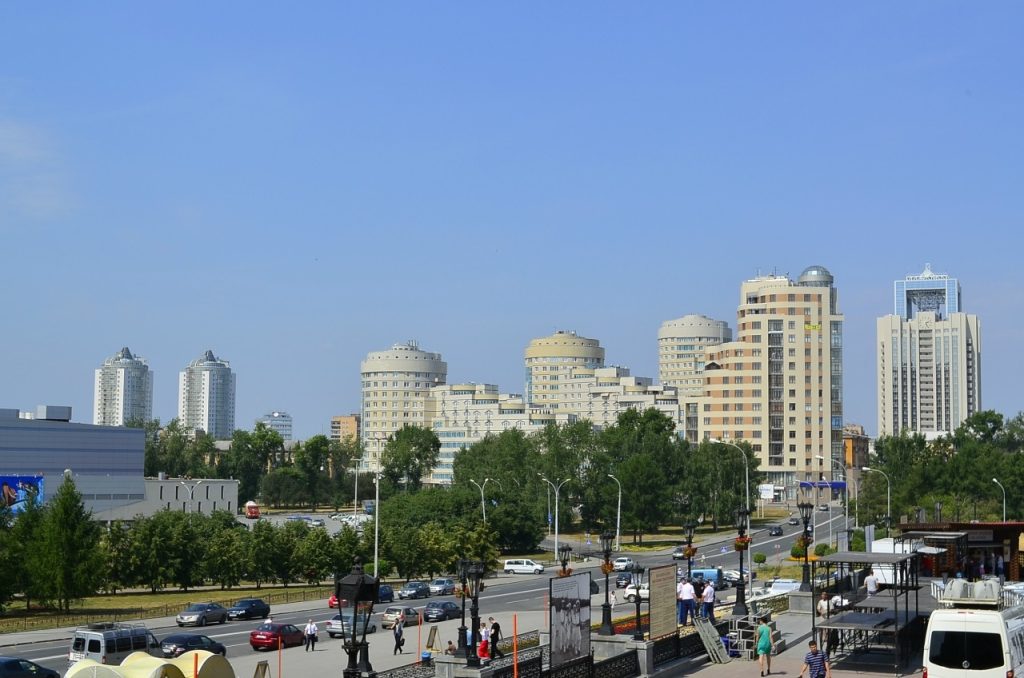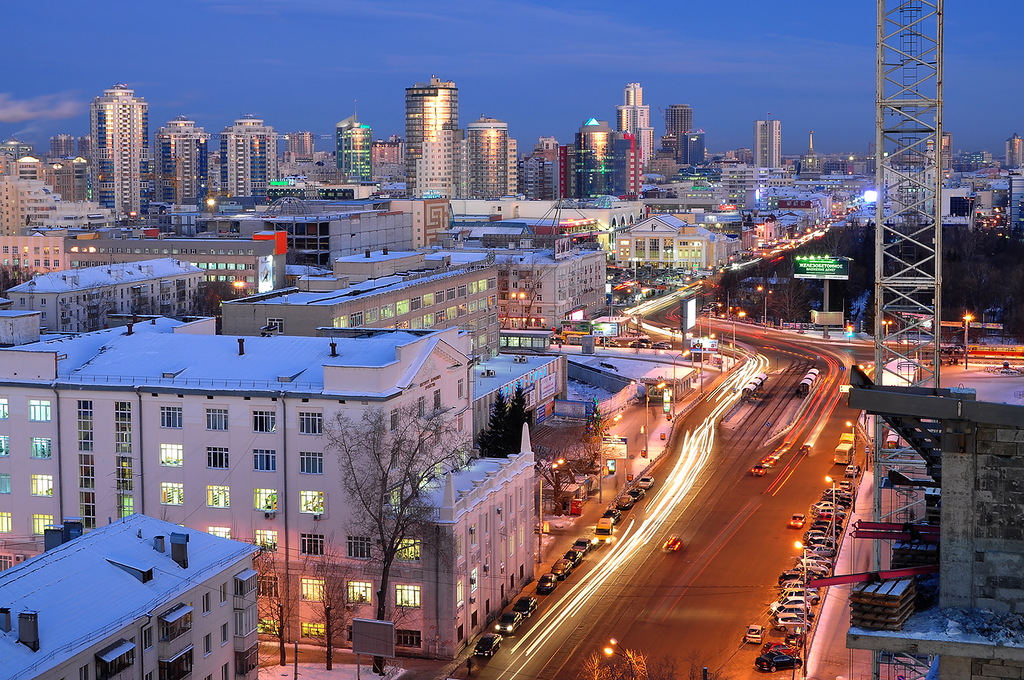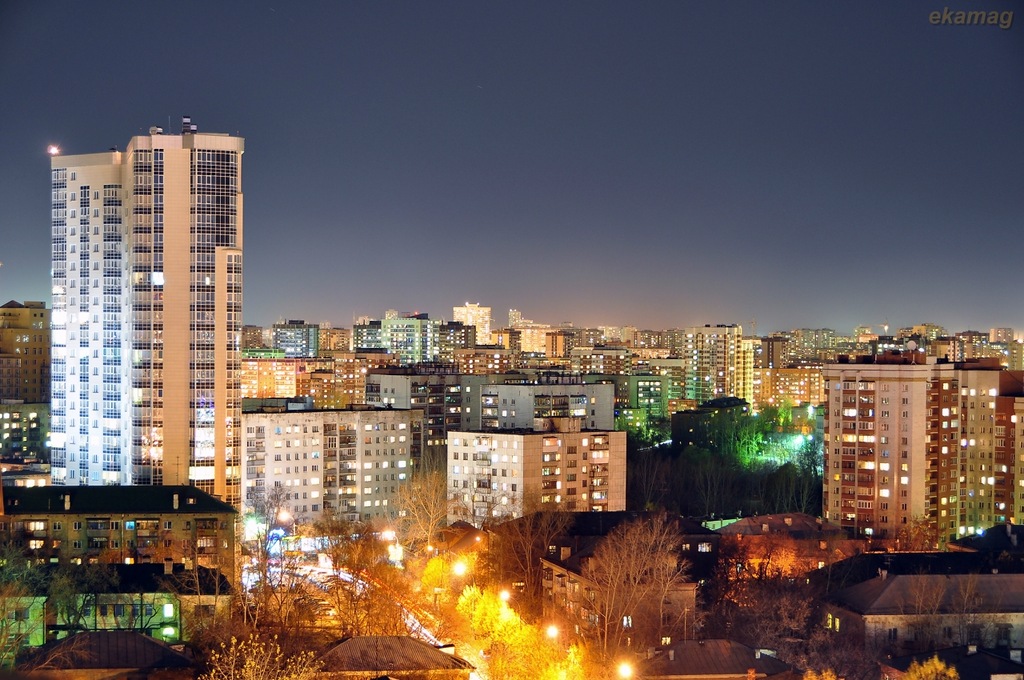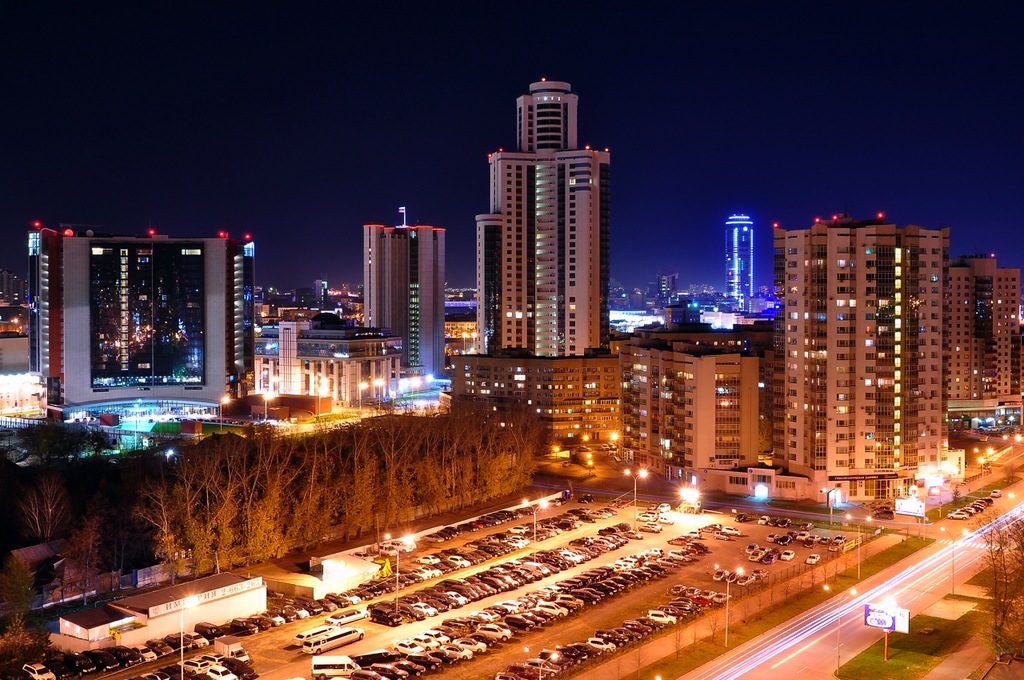Yekaterinburg
Contents
General information and history of Yekaterinburg
Yekaterinburg appeared thanks to Peter I, who wanted to organize production on the banks of the Iseti, and the fortress received its name in honor of the emperor’s wife, Catherine the Great. But Catherine II ordered to raise the factory settlement to the rank of a city and to lay from it the Great Siberian Route, which became the main road of the state. It is noteworthy that Yekaterinburg is exactly 20 years younger than St. Petersburg, another creation of Peter the Great, and in 2023 the city will celebrate its 300th anniversary.
The city is close to the border between Europe and Asia, which runs through the Sverdlovsk region, but it is located entirely on the eastern slope of the Ural Mountains. The height above sea level is 270 meters – not such a big figure compared to the top of the range (1895 meters). However, meteo- and climate-sensitive people note that the air in Yekaterinburg is rarefied. However, this quality is characteristic of any elevated area.
Historical information
- 1723 – foundation of Yekaterinburg, at this time a factory was built. The place of the future city was chosen by V. Tatishchev, and the project was headed by V. de Gennin. In the center of Yekaterinburg there is a monument to them.
- 1781 – granting the status of a district city, which is a part of the Perm province. A little later Yekaterinburg becomes the only mining city in Russia, but at the height of the mining crisis the latter status was removed.
- 1726 – the beginning of the mint. From 1735 in Yekaterinburg 80% of the coins that were in use in the country as a whole were produced.
- 1878 – the first railroad Yekaterinburg-Perm was built.
- 1917 – Bolsheviks seized power in the city.
- 1918 – execution of the royal family in the Ipatiev house. Later, due to dilapidation, the wooden building was demolished and the Church on the Blood was built in its place.
- 1924 – the city received a new name – Sverdlovsk.
- 1941-45 – Sverdlovsk received about 50 enterprises, which during the war were evacuated from the territory of the European part of the country.
- 1991 – return of the historical name. However, the region is still called Sverdlovsk region and for almost 10 years the name of the central railroad stations “Sverdlovsk-Passenger”, “Sverdlovsk-Sortirovochny”, “Sverdlovsk-Tovarny”, etc. was retained.
Climatic and environmental conditions in Yekaterinburg
Yekaterinburg is located in a temperate continental climate zone. Winters here are frosty, but summers can be both warm and cold. Daily temperature fluctuations of 30-40°C are a common phenomenon, so you may not be surprised if it suddenly snows in the middle of summer. Such a natural anomaly is common in June, but July and August are mostly unaffected by it. In winter it is the same: severe frost can be replaced by a thaw and vice versa.
In autumn and spring, the city looks miserable and unattractive: almost the entire surface of the roads and sidewalks are covered with mud and huge puddles, which are a high-risk area. After all, you never know what “surprise” may be under the surface of not the cleanest water: a small island of ice or even worse – an open well leading to the depths of municipal hell. So while in St. Petersburg one should be wary of killer icicles hanging from the roof cliffs of all buildings without exception, in Yekaterinburg the real threat is posed by roads.
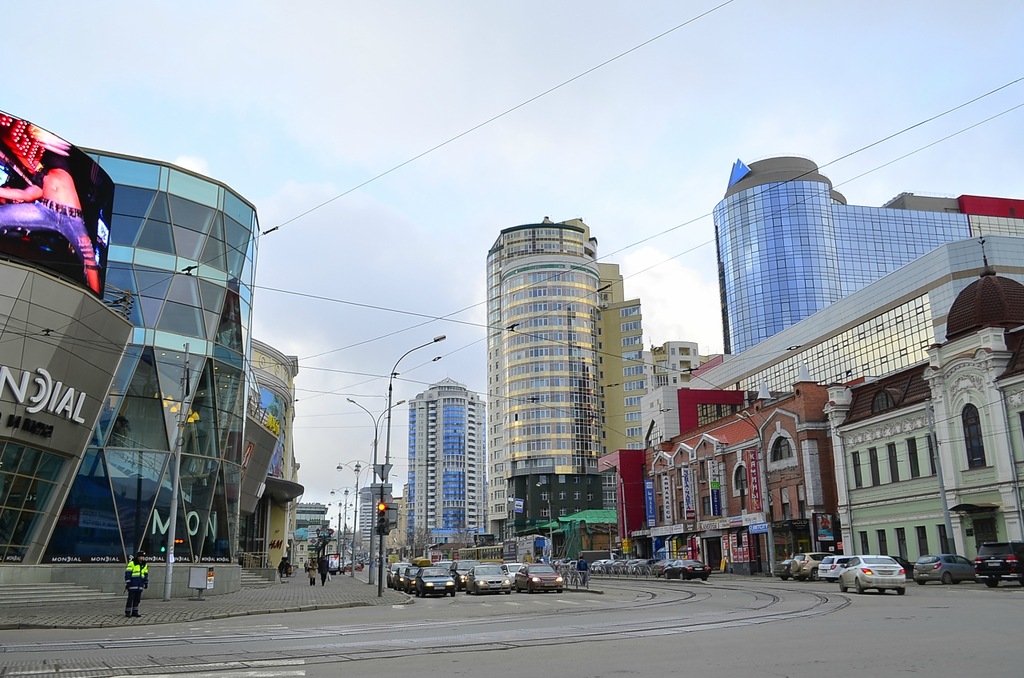
However, amazing things happen even in a flat place. There are cases when cars went underground and had to be rescued with the help of special equipment, because the hole was formed directly under the vehicle, and its depth reached a meter. Asphalt failures here are not periodic, but systematic: several such cases occur on average per year. It is noteworthy that the city stands on solid rock, not on swampy soil, which once again confirms the negligent attitude of public utilities to the work of maintaining the territory entrusted to them.
In general, the environmental situation leaves much to be desired: Yekaterinburg is among the dirtiest cities in Russia. And although it was allegedly excluded from the unfortunate official lists, the situation in the city has not improved. The main polluters are industrial enterprises and citizens themselves. Only the central streets are cleaned and only on holidays, and all this is done mostly without the use of water. And after the raid, the dust cloud circles in the air for some time, which later descends to the same place.
Yekaterinburg’s atmospheric pollution index is not the best for a megacity . The list of the main poisonous substances in the atmosphere is as follows:
- 56% formaldehyde;
- 16% benz(a)pyrene;
- 13% nitrogen dioxide;
- 8% ammonia.
Water on the territory of the city is polluted not less than air. This applies to both underground sources and other water bodies. The opening of the bathing season from year to year is accompanied by the same message from the sanitary services: there are no suitable places within the city limits of Yekaterinburg. The Iset River is also in distress – many industrial enterprises dump waste into it, it even receives sewage. Among the harmful substances that poison the main artery of the city are copper, manganese, zinc, nitrite nitrogen, ammonium nitrogen. Periodically, oil products get into the water body, leading to mass fish pestilence.
The main polluters of the atmosphere are automobiles, which account for over 90% of all emissions. As for enterprises, the maximum damage is caused by the following:
- Novo-Sverdlovskaya and Sverdlovskaya TPPs;
- Ural Rubber Technical Products Plant (RTI);
- Verkh-Isetsky plant, etc.
While searching for sources of pollution of the ecology of Yekaterinburg, one should not discount the residents as well, as their “contribution” to soil contamination is great: the city is gradually turning into a dumping ground.
Population and education in Yekaterinburg
Since the mid-2000s, the population of Yekaterinburg has been steadily increasing. This is partly due to visitors from Asia, including Uzbekistan and China, but birth rates are also increasing, but not as fast. According to official statistics, as of the beginning of 2023, 1,539,371 people are registered in Yekaterinburg.
The city received the title of a million-strong city back in 1967, since then the number of residents has not fallen below the cherished mark. And it will not happen, unless, of course, the environmental situation is not heated to the limit. And although it is believed that the capital of the Urals is home to a maximum of 1.6 million people, including all the unregistered, the real number of residents is much larger, it’s just that no one has ever tried to keep an accurate count.
The structure of the population in relation to age and working capacity indicators is as follows:
- 5.36% – preschoolers;
- 13.23% – schoolchildren;
- 62.17% – able-bodied citizens;
- 19.24% – pensioners.
In Yekaterinburg, women prevail: there are 9% more women than men. Nevertheless, this difference is not felt and does not have a significant impact on the demographic situation.
The distribution of city residents by districts is as follows:
- 21% – Ordzhonikidzevsky;
- 16% – Chkalovsky;
- 16% – Kirovsky;
- 15% – Verkh-Isetsky;
- 12% – Leninsky;
- 10% – Oktyabrsky;
- 10% – Zheleznodorozhny.
There are enough educational institutions in Yekaterinburg, and in recent years there have been many branches of foreign universities and colleges. The most popular place to get a future specialty is B.N. Yeltsin UrFU. The university was formed in 2009 by merging two leading universities of the city – A.M. Gorky UrFU and UGTU-UPI. In its immediate vicinity is Vtuzgorodok, a microdistrict where many buildings are represented by student dormitories of predominantly Stalinist construction.
While some educational institutions appear in the capital of the Urals, others are eventually liquidated. Thus, at the suggestion of the Minister of Defense in 2011 was disbanded Yekaterinburg Higher Artillery Command School (former Artillery Institute), and its cadets for further training were sent to St. Petersburg.
Yekaterinburg districts and real estate
The city is represented by 7 districts: Ordzhonikidzevsky, Kirovsky, Chkalovsky, Oktyabrsky, Verkh-Isetsky, Zheleznodorozhny, Leninsky. Each of them, in turn, is divided into several neighborhoods: the area of some is impressive, others, on the contrary, are not so large, but have every right to exist.
Ordzhonikidze district
The Ordzhonikidze district, the largest in terms of population, includes three territories:
- Uralmash;
- Elmash;
- Veer.
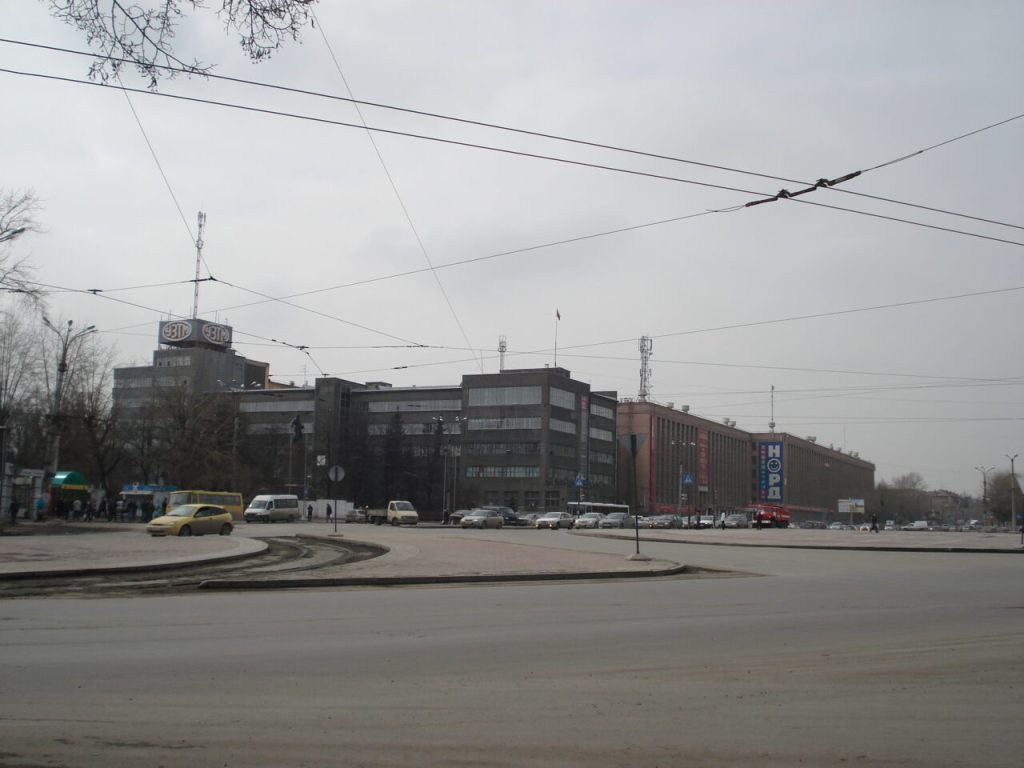
Uralmash is the most densely populated microdistrict of Yekaterinburg, located in its northern part. It is separated from Elmash by Cosmonautov Avenue, which runs from the railway station outside the city. This name of the area was not accidental: the word “Uralmash” came from the abbreviation of the name of the main enterprise located in this area – the Ural Heavy Machine Building Plant (UZTM). The approximate number of the population living in this territory is about 200 thousand people – a record-breaking figure by the standards of the neighborhood. For comparison: in one Zheleznodorozhny District lives less than 140 thousand people.
In the dashing 90’s and early 2000’s Uralmash was known as a real criminal center, the Uralmash mafia was legendary throughout the country. In 2004 every 5th crime registered in the city was committed on the northern territory. And this, by the way, is about 30 illegal actions per day and only officially registered. It is difficult to even guess how many other crimes remained “behind the scenes”.
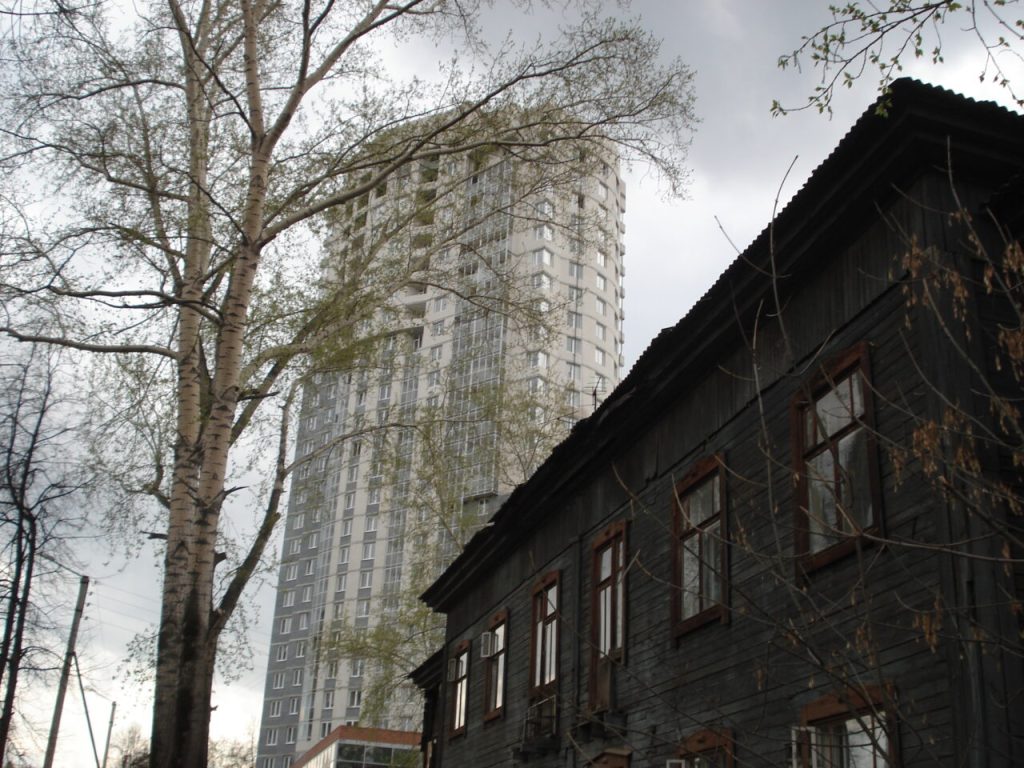
Despite the crime situation, no one is in a hurry to leave the neighborhood. On the contrary, new houses are being actively built in the neighborhood, stores, cafes, kindergartens, etc. are being opened.
On the territory there are numerous parks, there is even a lake Shuvakish, which used to be clean. By the mid-2000s the pond turned into a swamp, but some time later it was cleaned by local volunteers and fenced off. Now there is a paid city beach in this place: for the right to bask in the sun you will have to pay a symbolic sum, but in any case it is better than to contemplate a swamp with a breeding ground of blood-sucking insects. Although it is unlikely that the water body will be fully restored….
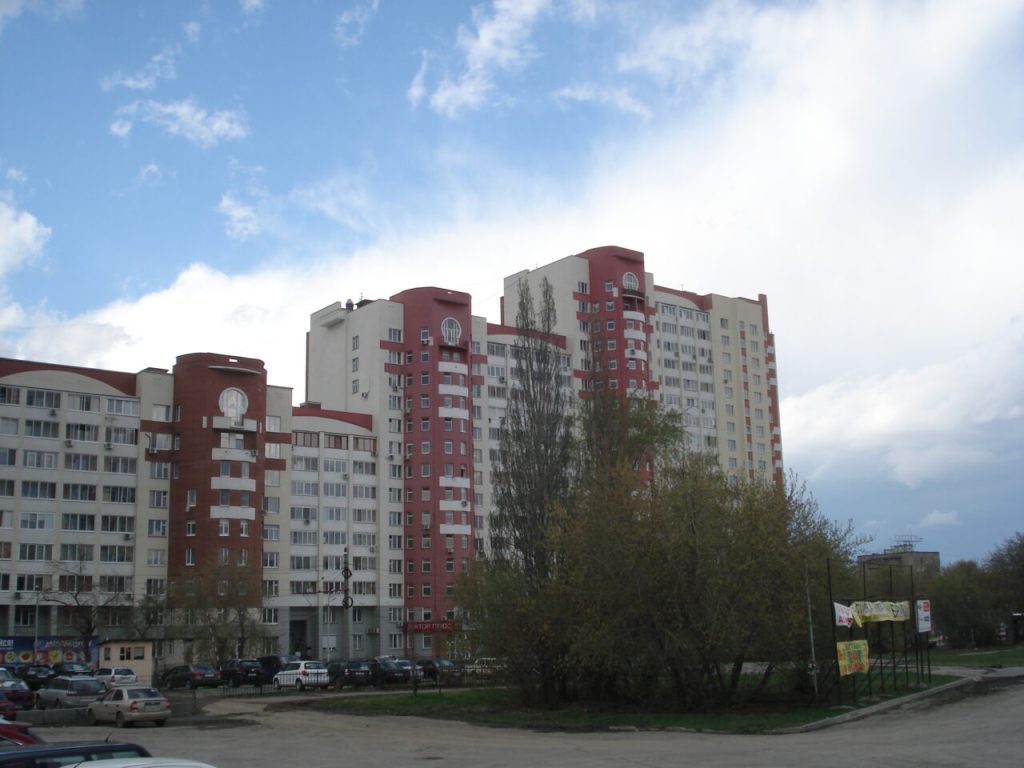
Uralmash is one of the most ambiguous microdistricts of the city, which, on the one hand, is distinguished by a favorable location and a great choice of transport. But on the other hand, it stands out for the potholes and potholes that decorate the local roads, frequent utility accidents, and the scarcity and monotony of recreational facilities. People of different ages, social level and wealth live here.
Veer is often attributed to Uralmash, but it is considered a full-fledged neighborhood of the city. The area is located in the very north, and got its name due to the interesting arrangement of streets resembling a fan. This territory is of interest to developers of apartment buildings, but within its boundaries there is a settlement formed in Soviet times. You can not fully call it a cottage – there was no such concept in those times. But the sight is interesting: on one side of Bakinskikh Kommissarov there are high-rise buildings, on the other side – private houses.
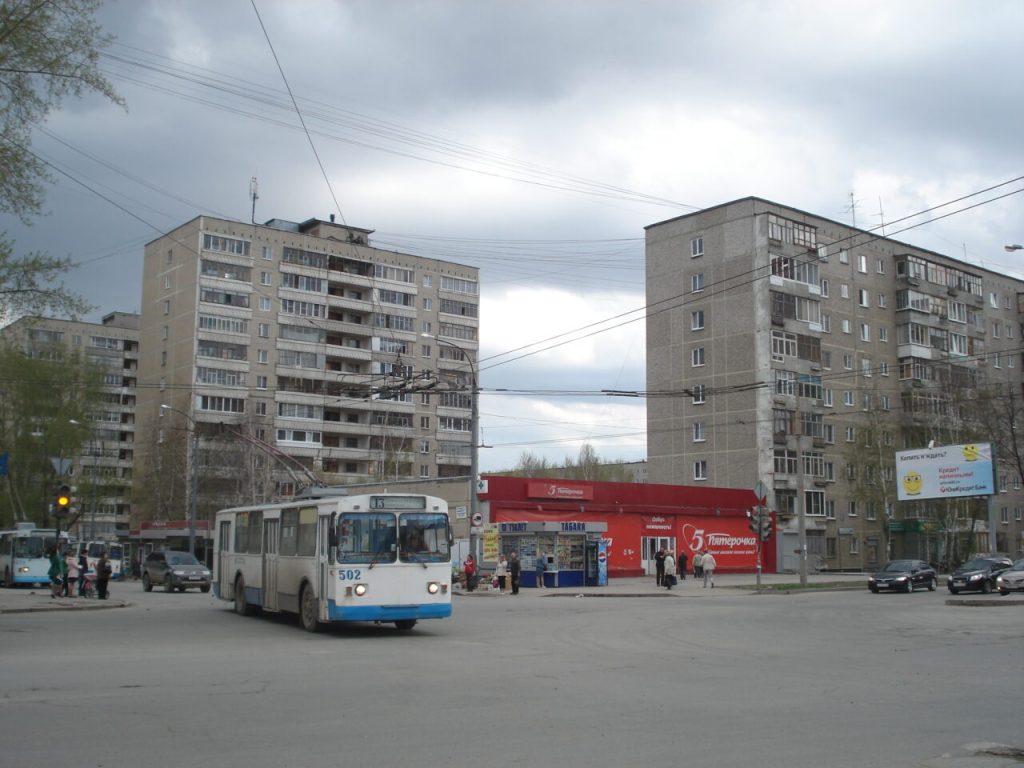
The microdistrict is not popular because it is located in the middle of nowhere. And if in Uralmash there are still places for leisure and recreation, here there are none at all. Therefore, the only place where young people gather, as in the good old days, are the entrances. Among the significant objects there are only the trolleybus depot and the winter stadium “Uralmash”, which different sources refer either to the territory of Uralmash or to Veer. The neighborhood is mostly inhabited by older people, couples, children, young people are also found, but less often. In principle, to rent an apartment here is not so expensive compared to the average prices in Yekaterinburg, but without a car will be difficult, because the main and almost the only transportation here is a trolleybus. To get to the metro station “Prospekt Kosmonavtov” from the park on Kommunisticheskaya with a relatively dense flow of traffic in the best case you will have to spend at least 30-40 minutes.
Elmash in contrast to Uralmash is located on the other side of Cosmonauts Avenue, closer to the eastern border of the city. Traditionally, the neighborhood was named after the industrial enterprises located on its territory. Among them is Uralelectrotyazhmash, which belongs to the Energomash group of companies. The two parts of the same district (Uralmash and Elmash) are similar in their characteristics: there are equally rough roads with pits of different depths, there are full-fledged operating sports complexes, new buildings are adjacent to two- and three-storey wooden shacks. Even the cost of real estate is approximately the same. Even the subway exits are on both sides of Cosmonauts Avenue.
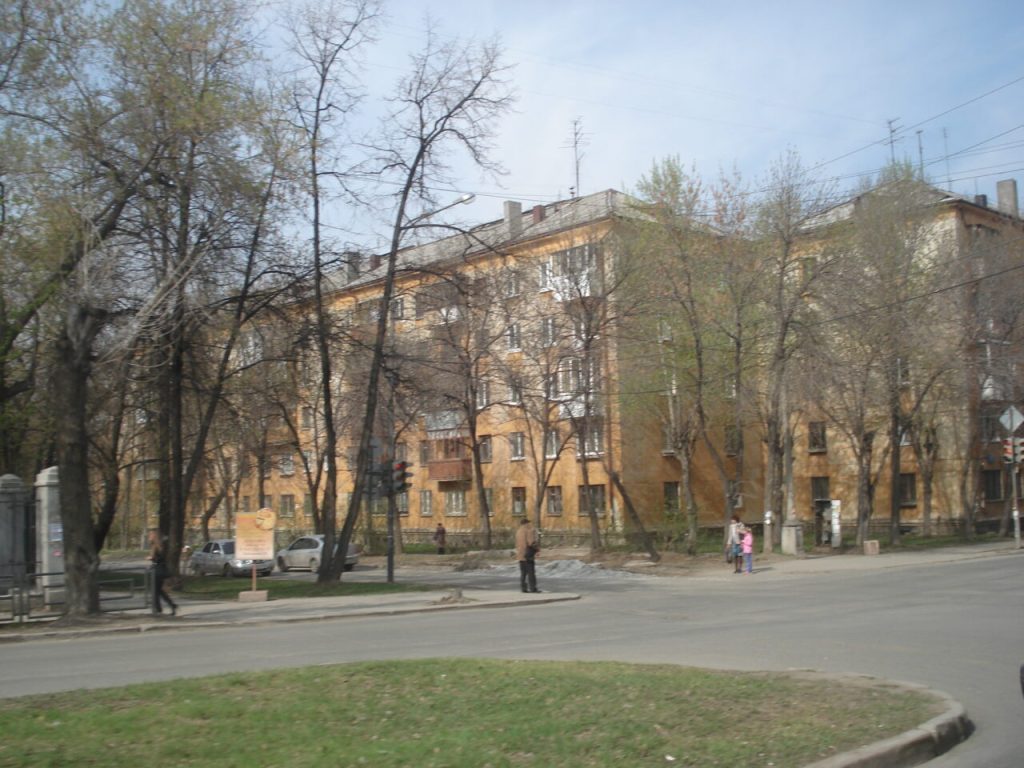
The cultural and recreational facilities in Elmash are in a very poor state, but a large number of schools and kindergartens are functioning. Life here is rather dull, but for couples with small children, all conditions have been created: playgrounds are provided, although not in the best condition, there are various sections. That is why young parents often settle in the neighborhood. Although recently there has been a building frenzy here, the area is gradually being built up with new houses to the detriment of the tranquility that has reigned in Elmash for a long time.
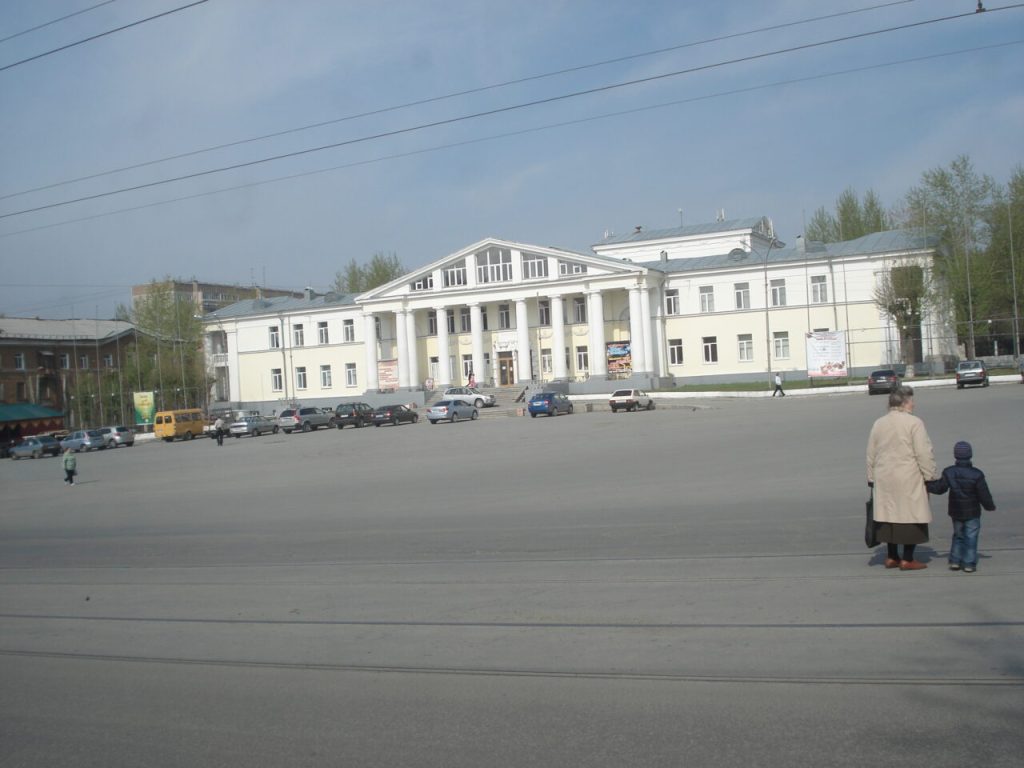
Kirov district
The Kirov district is divided into:
- Pionersky settlement;
- ZhBI;
- Shartash;
- Vtuzgorodok.
Pionersky settlement is one of the oldest neighborhoods in Yekaterinburg, which as of the beginning of 2012 is home to about 89 thousand people of different social status and wealth. Attractive from the point of view of living standards, the territory, which was originally allocated for the construction of houses for families of railroad workers by the cooperative “Pioneer”. Hence the name “Pionersky” appeared. But it did not take root immediately after the appearance of the new residential quarter.
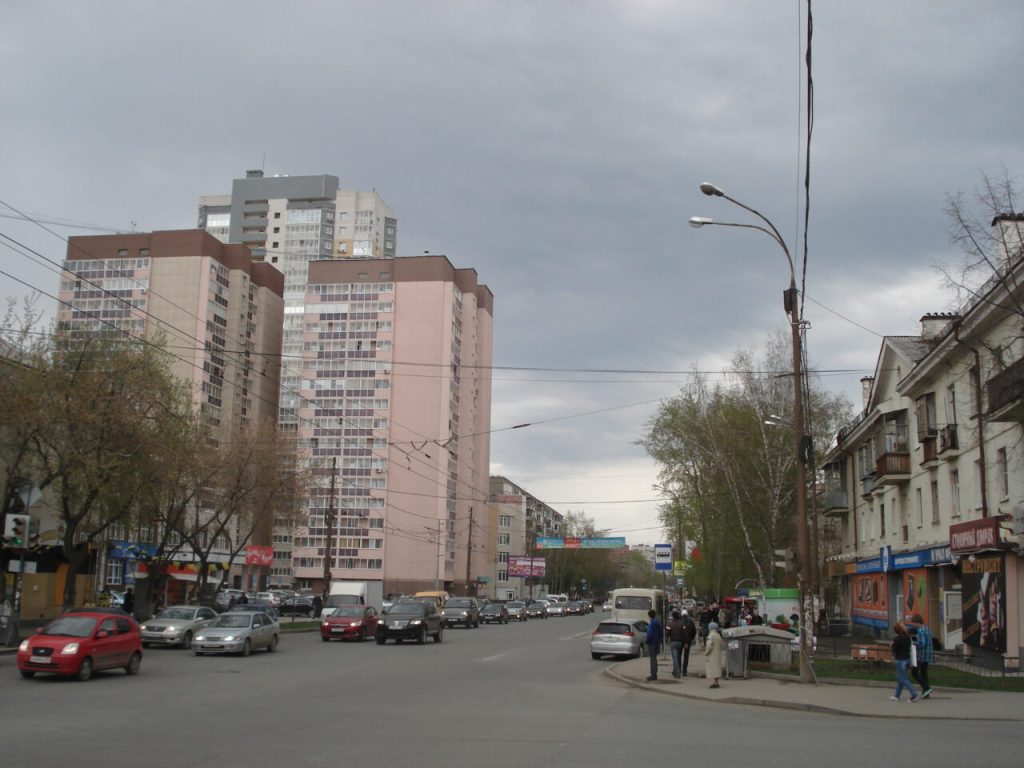
The microdistrict is promising with a well-developed infrastructure, but the courtyards are not really adapted to the realities of modern life. Local residents spend a lot of time on the battlefield for parking spaces, in the evenings there is a real full house. Although the situation with parking lots is depressing in the city as a whole, here the problem is particularly acute. Some drivers, however, solve it in their own way: if there is no free space, they block someone else’s car, and leave a note with the phone number of the car owner on their own. Just in case.
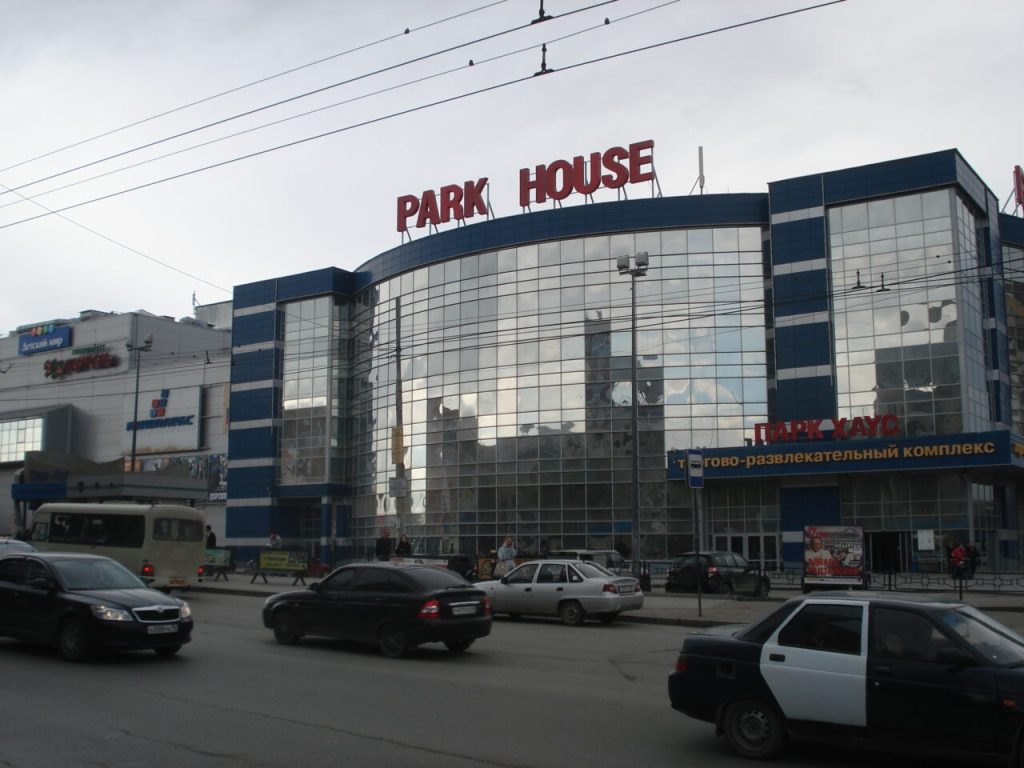
Despite the fact that local construction has not yet reached the microdistrict (it is in the plans), the cost of housing is above average.
ZhBI microdistrict has a second name – Komsomolsky, so it was called originally. The territory is cut off from the rest of the city by several main highways and railroad tracks, so it is not always easy to get to it. It is like Uralmash: there are only two ways in/out, and if there is a jam on them, it means that you will either have to stand until the last one or make a big detour through the bumps of the city’s outskirts. There is no third way: the metro line connecting this part of Yekaterinburg with the rest of the city is still at the design stage.
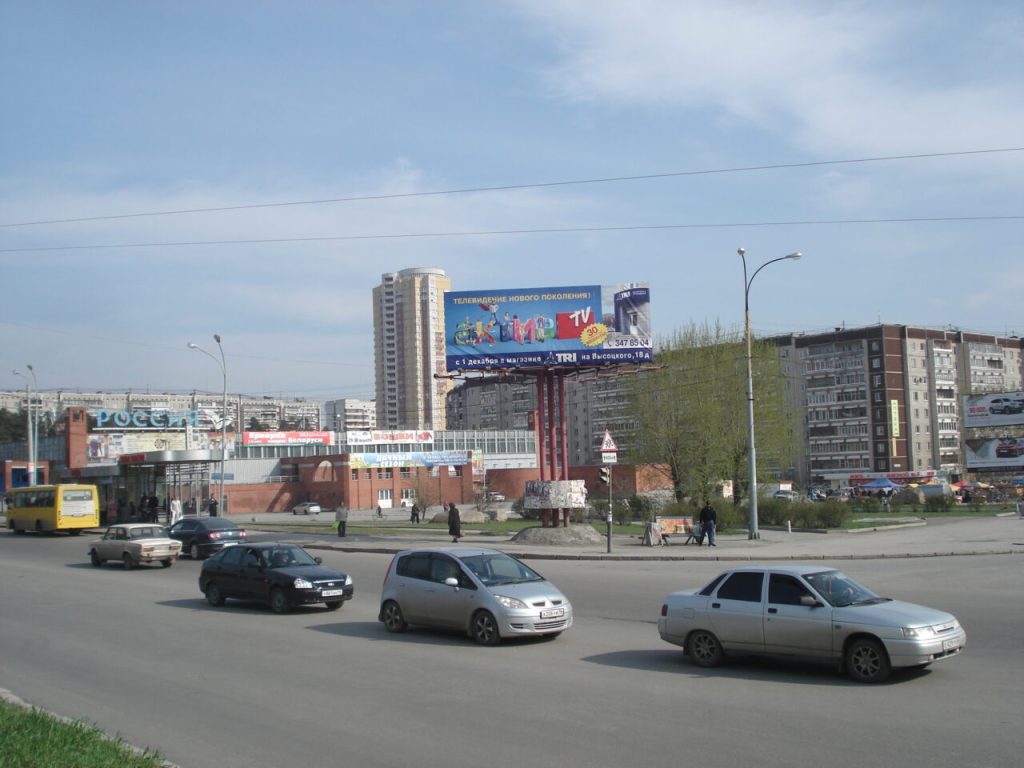
ZhBI is a typical dormitory microdistrict with a deficit of recreational facilities. The main attraction is the KOSK “Rossiya”, it is located near the Kamennye Palatki. Exhibitions, fairs, regional shows of hairdressing masters, etc. are held here. There are sports grounds on the territory, some, however, are in a deplorable condition. The construction of new residential buildings is flourishing on the outskirts, so the district is gradually being renewed, but here this process is proceeding at a slower pace.
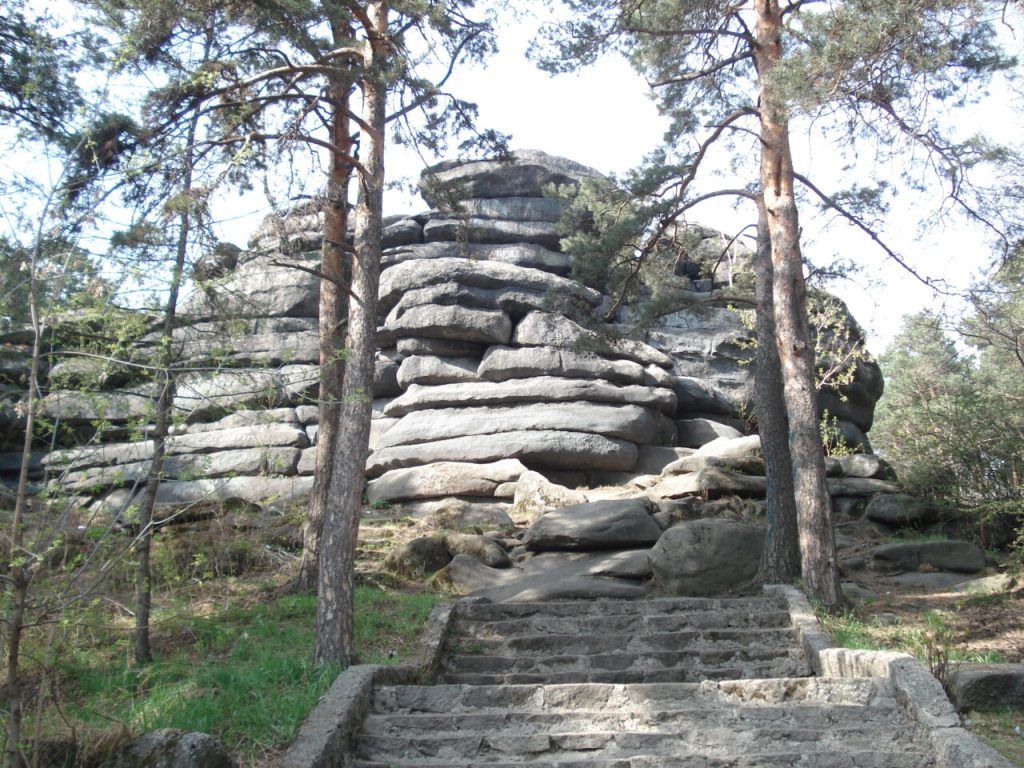
Vtuzgorodok was built for students, so there are numerous dormitories on its territory, with which new high-rise buildings are neighboring. Apartments in this neighborhood are expensive, since the area is located close to the center and in the absence of traffic jams you can get to the heart of the city in 10-15 minutes. The interesting combination of new buildings and dilapidated dormitory buildings, despite the attempts made (or made only on paper) to repair them, suggests certain thoughts. Going from one street to another is like traveling through time (exaggeratedly): here is the Soviet standard of construction, and next door are the houses of the new Russia.
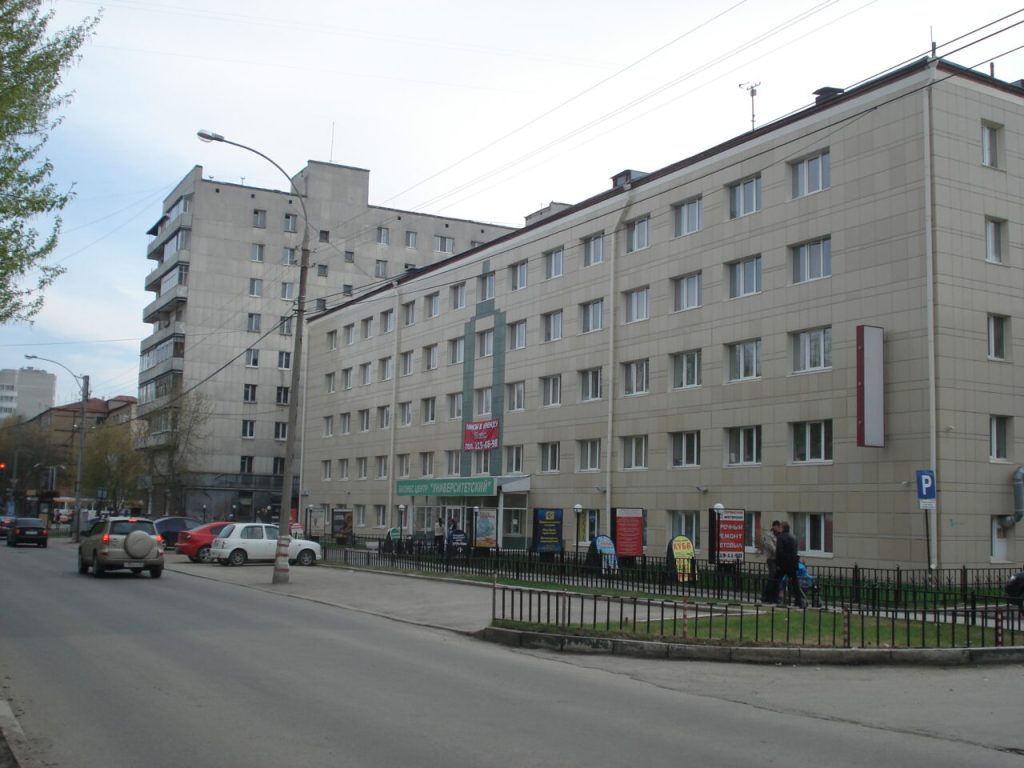
One part of the people living in the neighborhood is connected with several leading universities of the city, in particular UGTU-UPI (now UrFU). These are students, teachers, graduate students, other staff of educational institutions who have the right to a place in the dormitory. Another part – wealthy people who have purchased real estate in the area.
Shartash microdistrict got its name thanks to the lake of the same name, which is located within its boundaries. Once the reservoir was filled with clean water, but the negative side of urbanization has affected the natural wealth of the city. The quality of water leaves much to be desired, but some citizens continue to swim in the lake despite the prohibitions of supervisory authorities. By the way, the bottom of the reservoir hides many sunken objects.
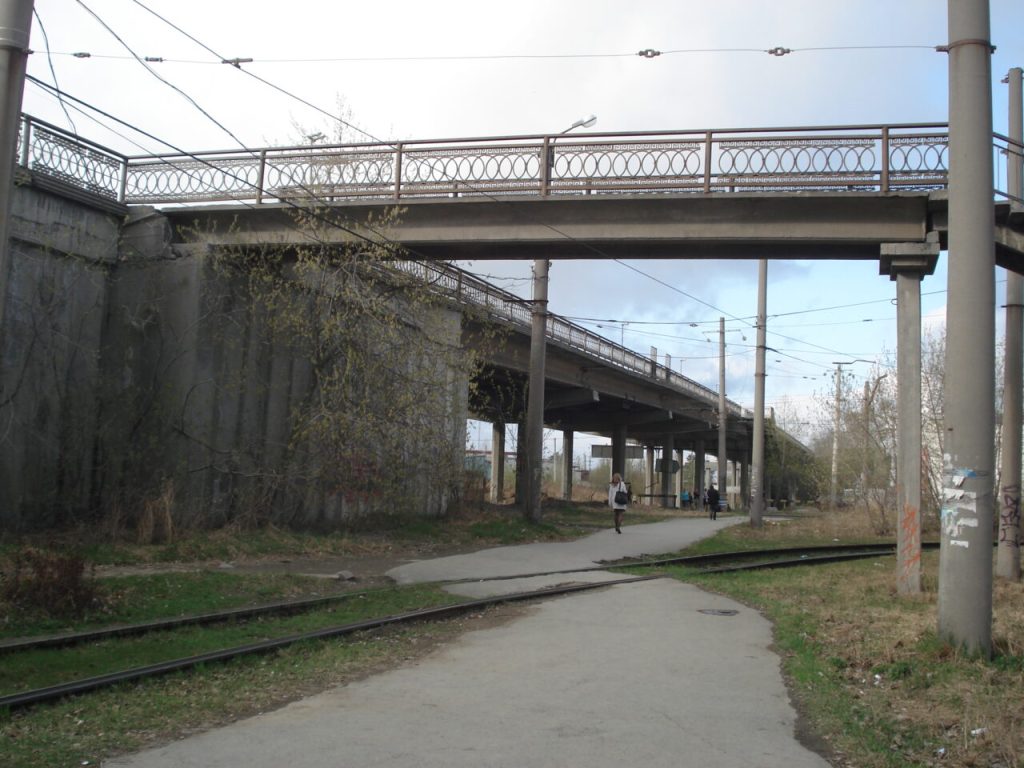
The neighborhood is mostly inhabited by typical Russian families, not poor, but not distinguished by a high level of wealth. There are no recreational facilities on the territory, except for the beach; there are also few stores, but there are car centers. There are both high-rise buildings and private sector. Construction is not carried out and the neighborhood is not updated.
Oktyabrsky district
On the territory of the Oktyabrsky district there are:
- Parkovy;
- Blue Stones;
- Poultry farm;
- Several settlements, including Koltsovo.
The Parkoviy microdistrict is located in close proximity to the Tsentralny microdistrict and borders on the Iset river bed. The maximum height of a building constructed on its territory is 25 floors. It is a great place for families with small children: there are as many as 6 kindergartens on a relatively small plot of land, but there is only one school. On average, the density of buildings is not so high – things are much worse in Botanika.
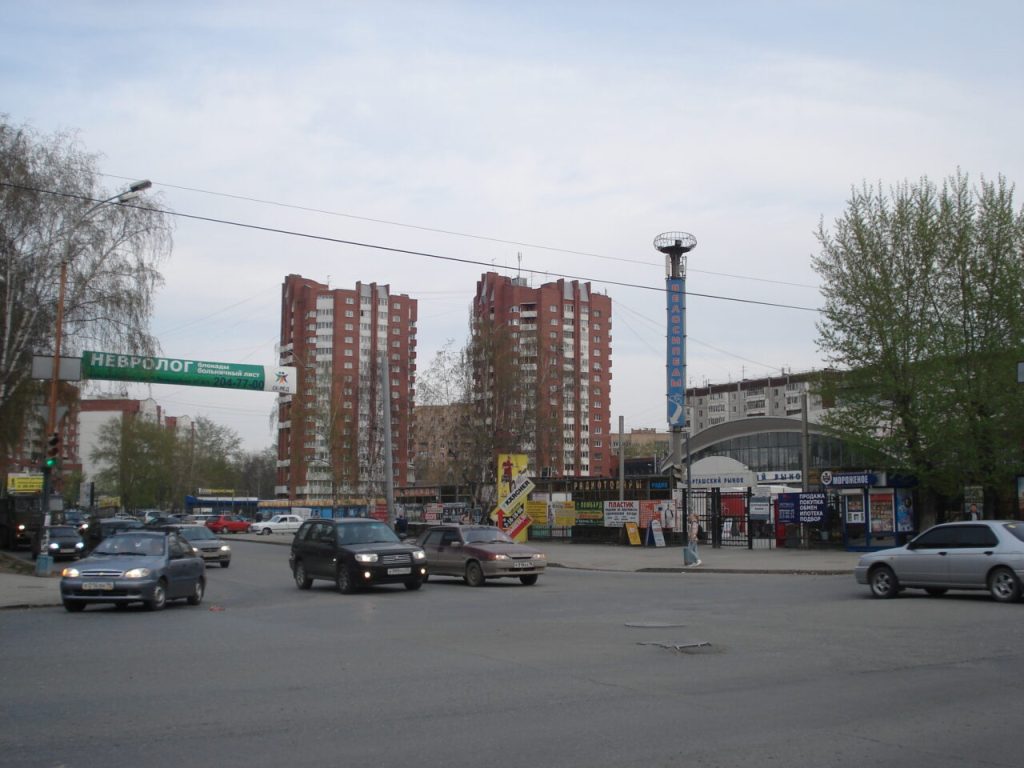
The neighborhood is inhabited by families of all ages, professions and different financial status. The microdistrict borders on the Central Park of Culture and Recreation, which is traditionally considered one of the favorite places of recreation of citizens.
Syinye Kamni is one of the small microdistricts of Yekaterinburg, on the territory of which there are only a few streets, and around it there are railroad tracks. It can be reached by two roads, and all of them are continued from the western part of the city. The area is an elevated island, as the houses here are built at some elevation from the level of the main highway. And because the curves are quite steep, there are artificial obstacles along the length of the ring road to keep drivers from accelerating.
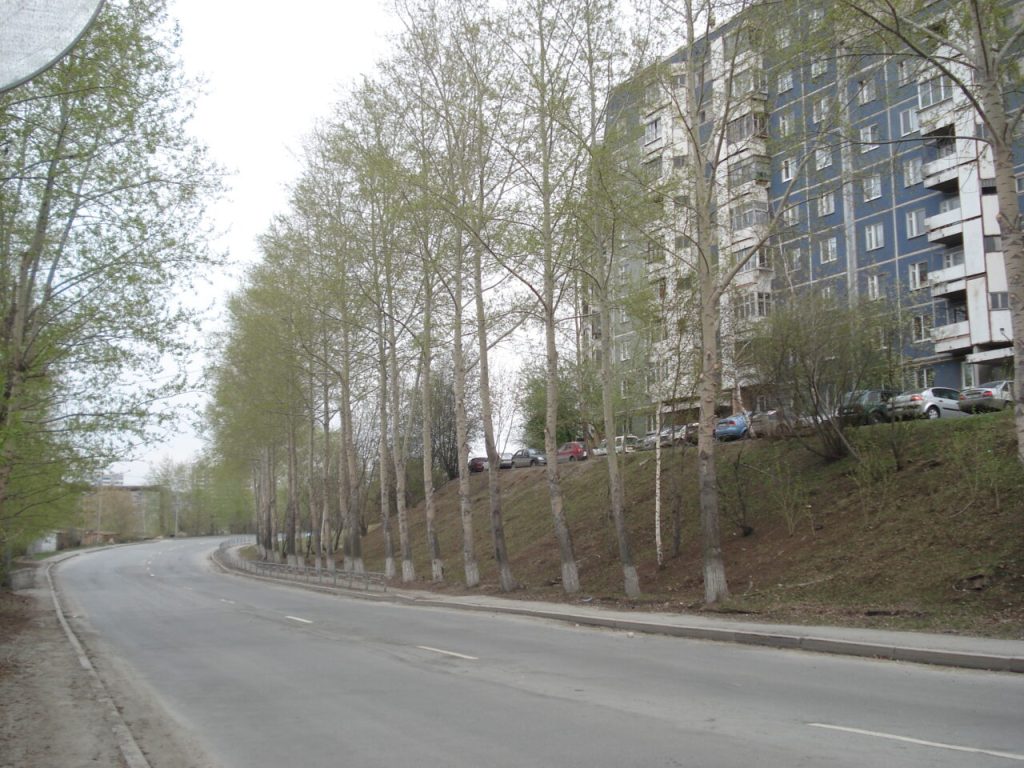
Sinye kamni is a typical dormitory district, where it is comfortable for couples to live, but there are no recreational facilities for young people on its territory.
Ptitsefabrika is a remote area, which is detached from the main urban massif. Here there is a poultry farming enterprise, which, in fact, gave the name to the area. In fact, the neighborhood with the poultry farm is not quite pleasant, because if from its side blows a strong wind, the characteristic smell is present in all the nooks and crannies of the area. But real estate here is not so expensive compared to the citywide standards.
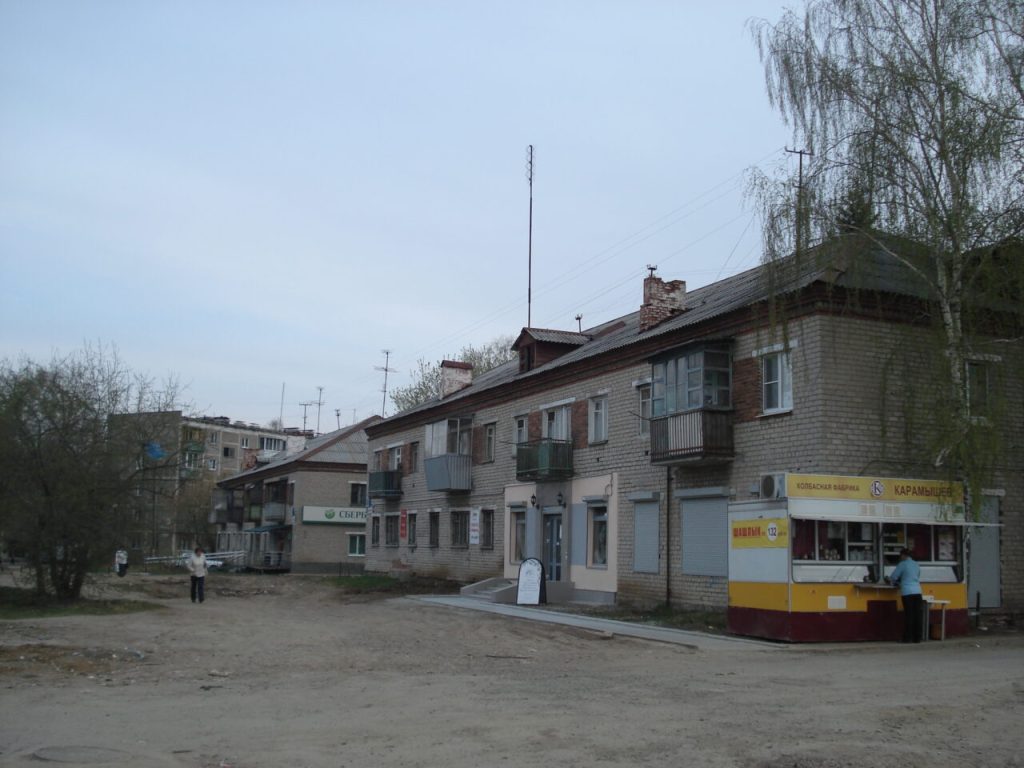
Ptitsefabrika (Ptichnik) is an unfavorable microdistrict from all points of view: there is a poor choice of employers, there are very few stores and other attributes of civilization, entertainment places are not provided at all, and there is no construction of new houses. Live here mainly those people who could not or did not want to move.
Chkalovsky district
Chkalovsky district is larger than the others in terms of area, but only 16% of residents live in it. This is due to the large coverage of the territories adjacent to Yekaterinburg, which include the following neighborhoods:
- Khimmash;
- Uktus;
- Vtorchermet;
- Keramika;
- 32 township;
- Elizavet;
- Botanic.
Khimmash is a city within a city. Here is a completely different life, there is no hurry and eternal bustle, but to get to the city center, you will have to spend at least an hour of time, and even more if you get stuck in a traffic jam. And they are not uncommon on the only road connecting the neighborhood with the rest of Yekaterinburg. However, the territory is attractive because in its vicinity you can live and work without going to the “big land”. In addition, you can buy almost all goods here, from food to household appliances and cars. Hospitals, schools and kindergartens are a matter of course. And real estate prices in general do not bite.
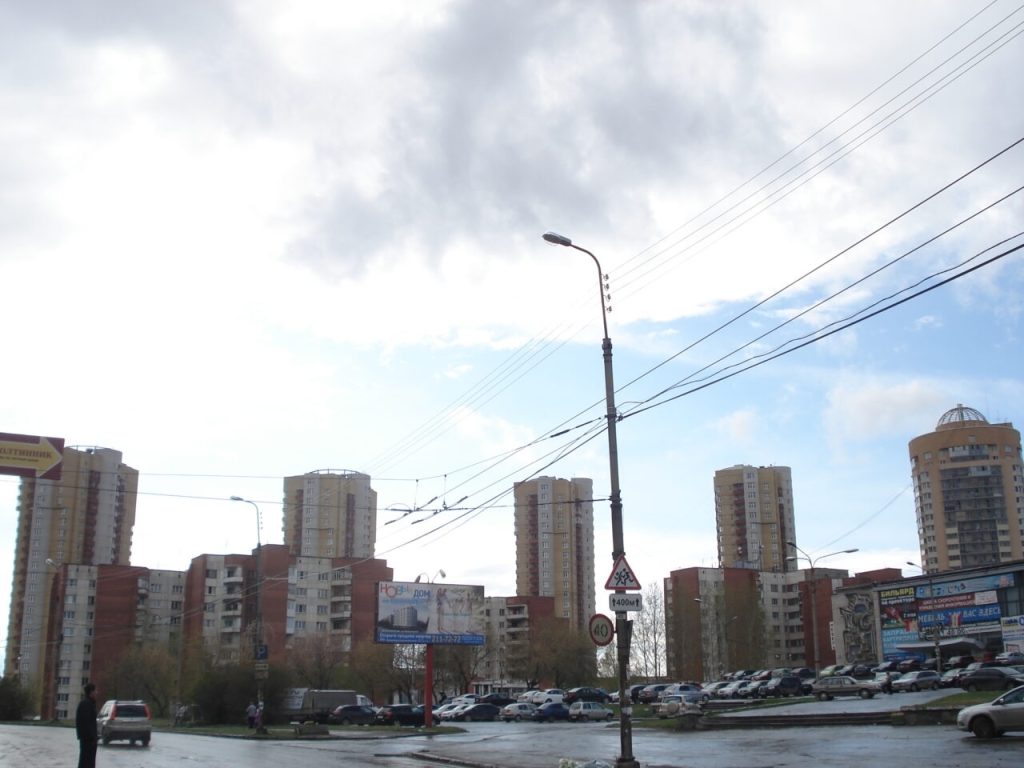
Still, the main part of the population chooses to work in other parts of the city, closer to the center. In this part of Yekaterinburg live pensioners and young people, students and working citizens, entrepreneurs and free artists – in short, representatives of all social groups.
Uktus is territorially located closer to the city center, but still at a decent distance from it. The main feature of the neighborhood is the proximity of the Uktus Mountains. Not that they are so high, but you can still go skiing and snowboarding on their slopes. The second object of increased attention is the water park, the only one in the city. In general, the territory is unevenly built up and lacks normal pedestrian paths connecting Uktus with the adjacent Botanichesky district.
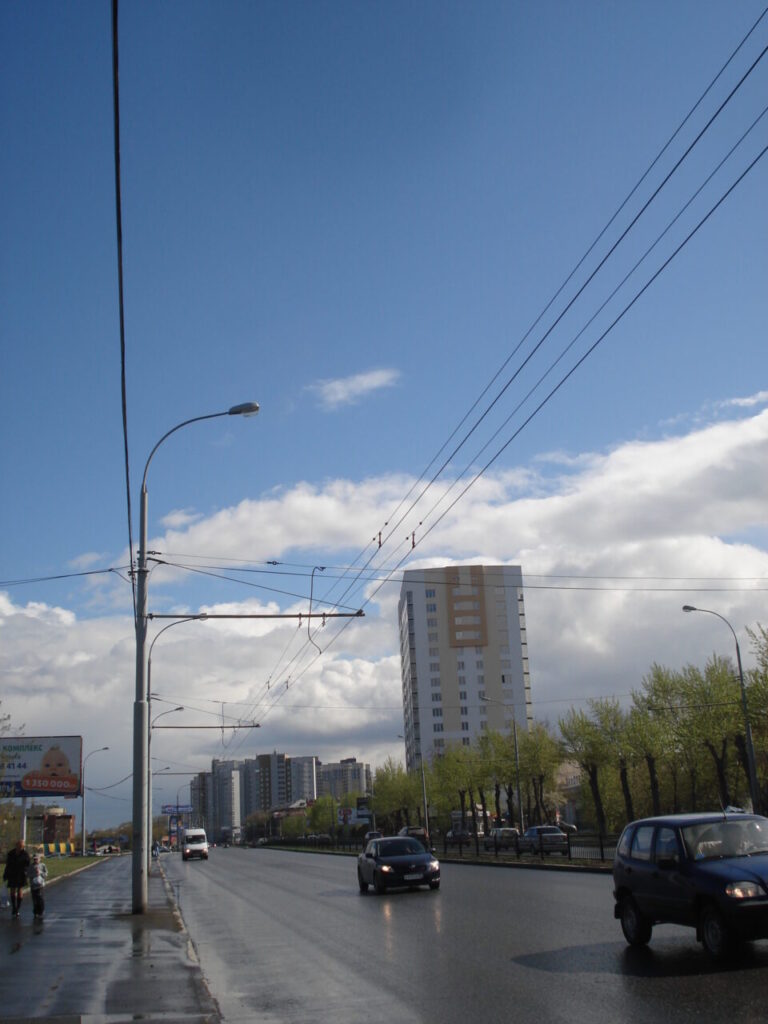
Since the area is located closer to the center compared to the southern suburbs, apartments here are somewhat more expensive than in Khimmash. The main part of the residents has a level of income not lower than average. On the territory of the neighborhood there is a hypermarket, which has traditionally become the main place of shopping for most tourists.
Vtorchermet – one of the southern outskirts of the city, which smoothly passes into another – Ceramic. Sometimes they are combined into one whole, calling the territory simply Chermet. On the one hand, the second division is more correct, because the area of Ceramica is insignificant and includes literally a few streets, private sector, a small number of high-rise buildings and dormitories of various types, directly behind which is a military range. However, it is not clear whether it is active, as no firing can be heard. But in a small forest area located on the territory of Ceramica, you can grill kebabs: convenient and close. What is not an ideal place for recreation? Except that there is no water reservoir nearby for complete happiness.
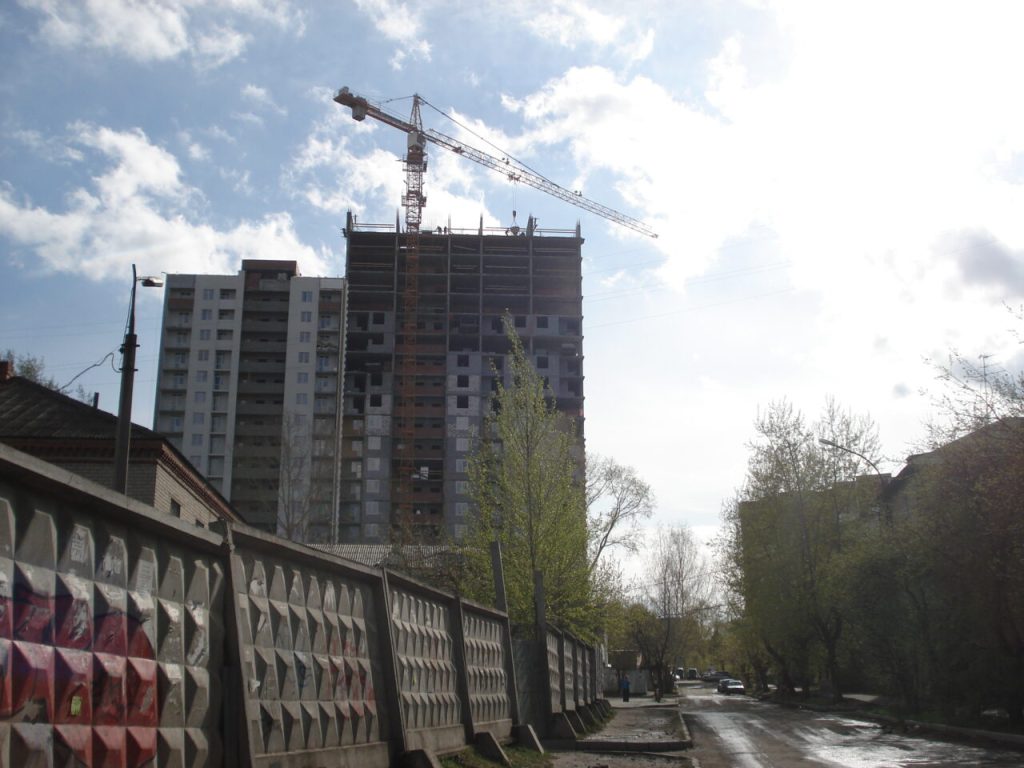
In general, Chermet is a green neighborhood, and since the mid-2000s it has been actively built up, with private and uninhabitable houses being demolished and replaced by new high-rise buildings. Local residents have long since gotten used to the sound of jackhammers that accompanies construction work.
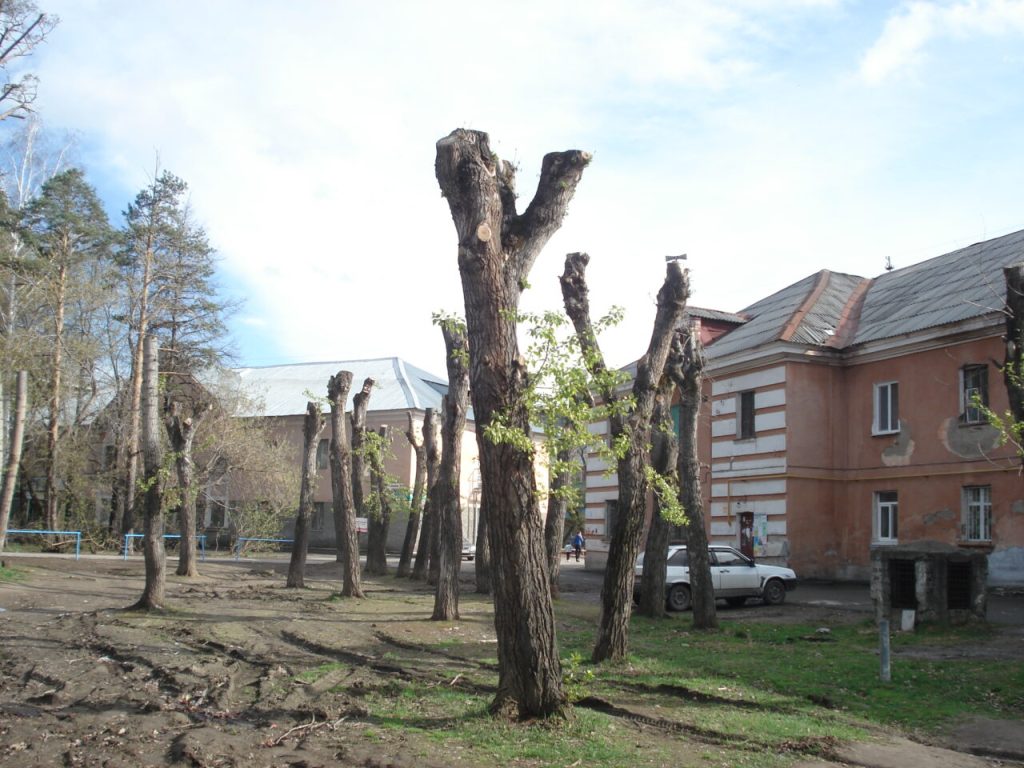
In terms of living arrangements, Vtorchermet looks attractive, as there are many employers represented in this area, there are kindergartens and schools in adequate numbers, there are sports facilities and places for recreation. A park is located here, numerous trees are planted along the roads. Now the neighborhood is no longer unrepresentable, although it can not yet be called prestigious, since it is located on the outskirts of the city.
Elite houses have been built here and people with a high level of income live here. They are still a minority, but the demand for southern real estate is present and will probably increase further. Places for the construction of new houses are formed mainly due to the resettlement of the private sector, although some organizations are looking for sites in other zones.
Unlike the inhabitants of Vtorchermet, the main part of the population of Keramika lives in their own houses and hostels. And since there are many students among them, the place becomes empty in the summer.
32 Township is an open-type military township located on the territory of Chkalovsky district, enclosed between two streets – Okrainnaya and Dorozhnaya. On its territory are located mainly five-story buildings of Stalinist-Khrushchev construction, the erection of new residential buildings is not carried out. Here live people and families that have a direct and indirect relation to military service.
Since its foundation, the young Botanica microdistrict looked attractive, and the apartments here were among the most expensive in the city. However, now it is considered not so prestigious. And it’s not the infrastructure at all, but the policy of the developers: they decided to literally “stuff” a small plot of land with buildings. As a result, local residents have suffered, as the windows of the multi-storey buildings opposite are literally adjacent to each other, and the right to privacy is faithfully guarded by dense curtains.
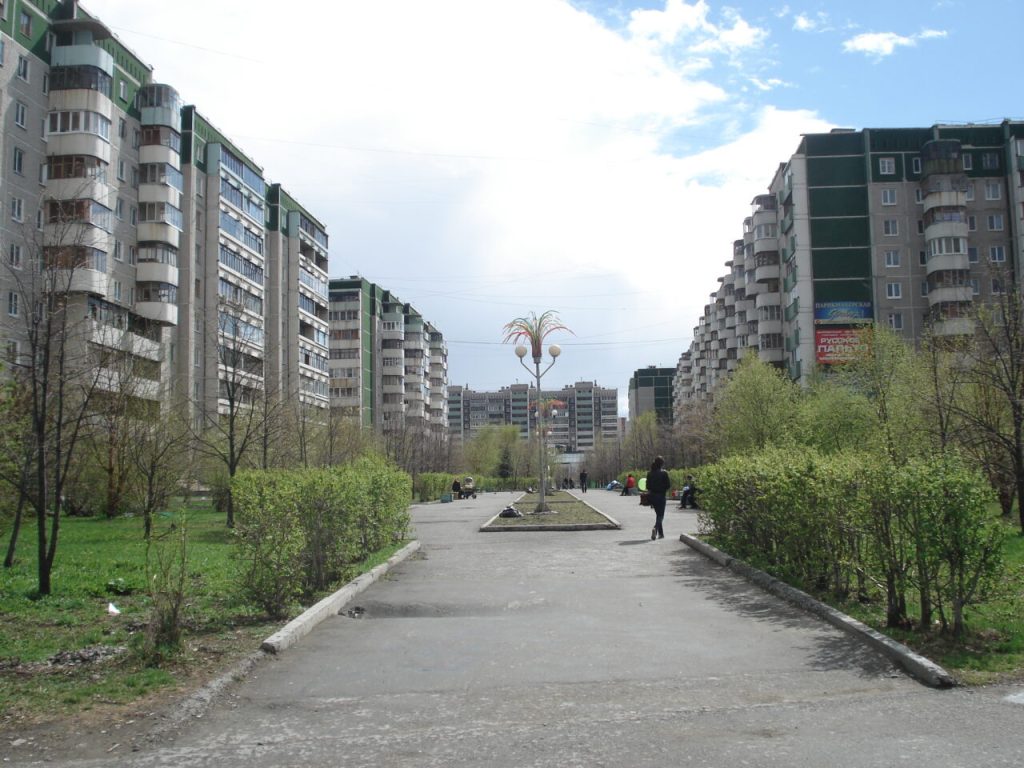
Nevertheless, the cost of housing is still quite high, the average price of a one-bedroom apartment in a new building (and almost all the houses here are newly built) is 3 million rubles. Despite the inconvenient location of the buildings, the neighborhood is partly inhabited by wealthy people, the rest have an income not lower than average. There are, of course, exceptions.
Elizavet is a former settlement attached to the city. It is located in the southern part of Yekaterinburg, is its logical conclusion. In the future, perhaps, it will be expanded further, and now about 15 thousand people live on its territory.
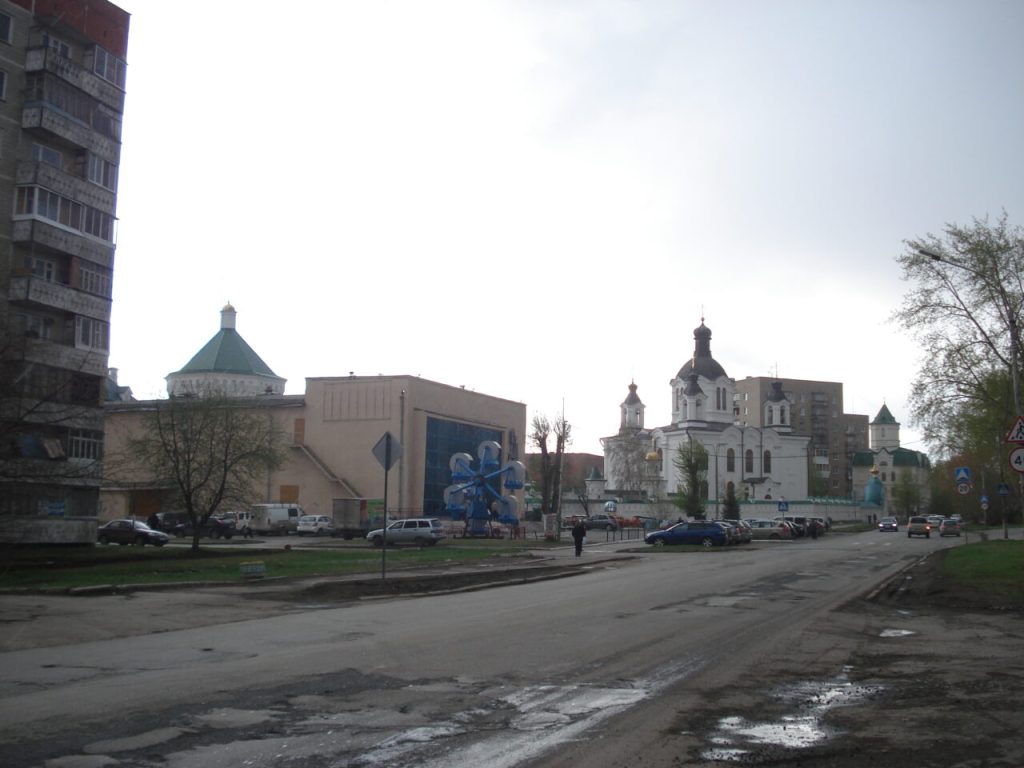
The population is diverse in terms of composition and income level, but no one is in a hurry to buy an apartment here. As elsewhere, the territory of the neighborhood is mostly inhabited by representatives of the so-called middle class.
Leninsky district
The Leninsky district includes:
- UNC;
- Akademichesky;
- Krasnolesye;
- Avtovokzal;
- Central;
- Yugo-Zapadny.
The micro-districts of UNC, Akademichesky and Krasnolesye belong entirely to the territory of Leninsky District and were founded relatively recently. On their territory new houses have been erected and primary infrastructure has been created. It is planned to develop this direction of urban development in the future.
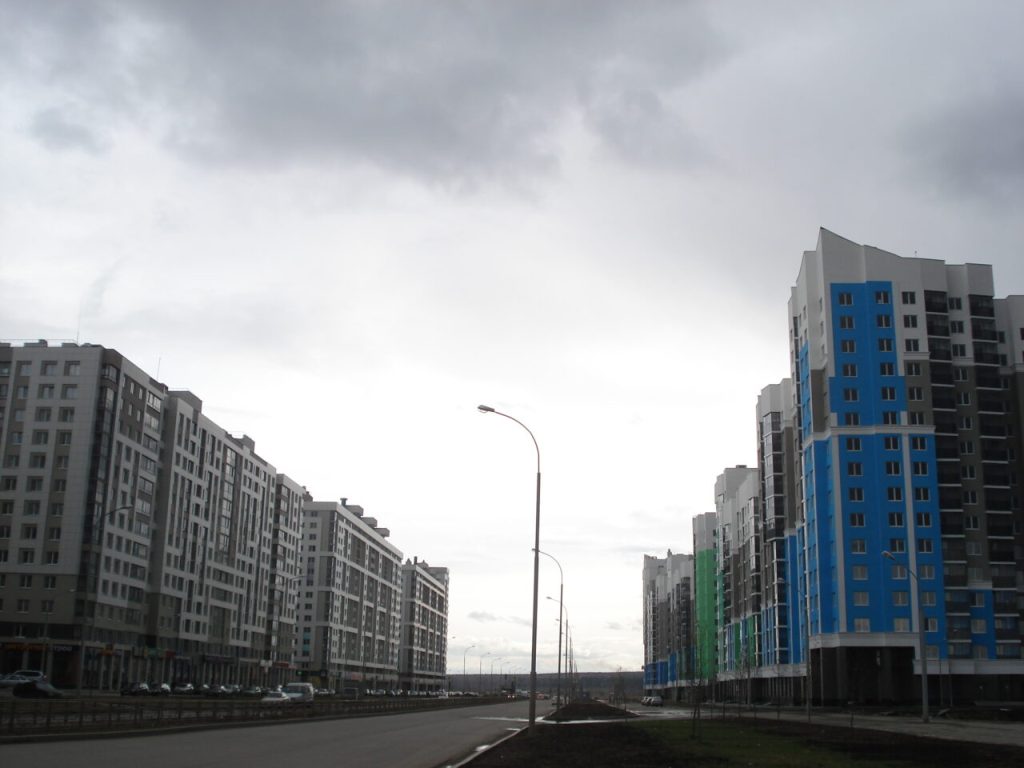
Although the UNC is located not far from the center of Yekaterinburg, it is one of the leading cottage settlements in the city. However, Stalinist houses are also present here. But Akademichesky is a completely new neighborhood, close to the south-west of the city. On the territory of these two neighborhoods live mainly wealthy people.
Most of the Avtovokzal microdistrict is located on the territory of the Leninsky district, a smaller part – runs in the Chkalovsky district. Here is a transportation hub that connects Yekaterinburg with many cities in the Sverdlovsk region and the Urals Federal District as a whole, as well as other regions of Russia and even some countries.
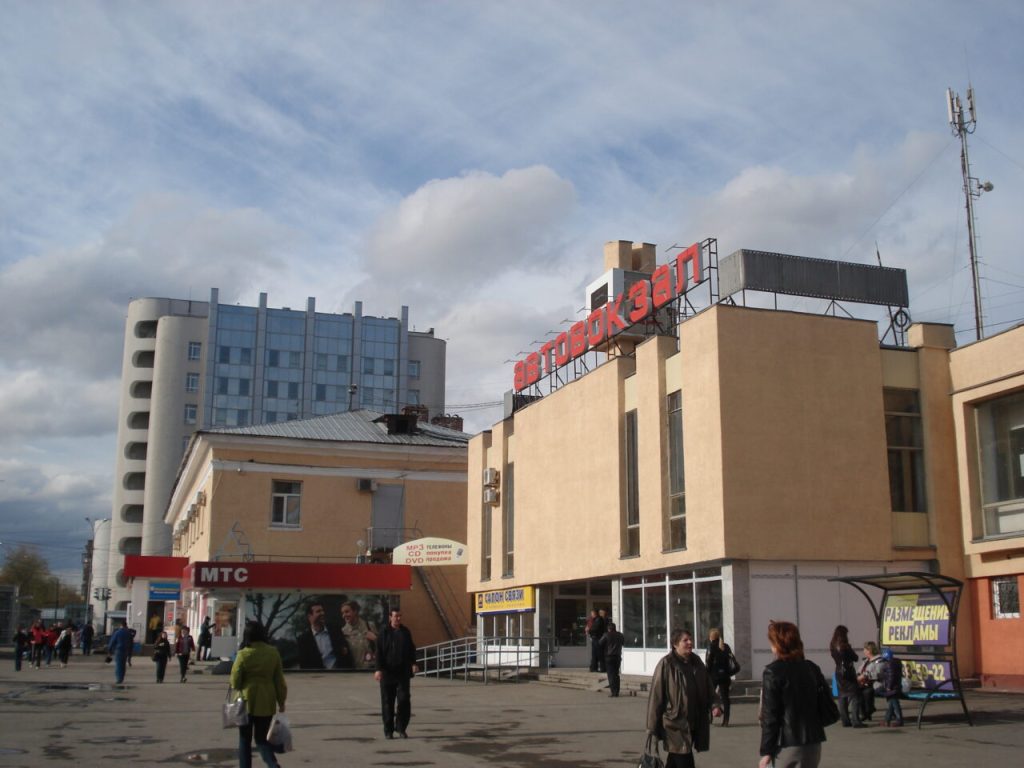
It is not without reason that the area was given such a name – the largest bus station of the city – Yuzhny – is located here, but there is also Severny (Zheleznodorozhny district). It is expensive to move to the microdistrict for permanent residence. It is difficult to characterize the local population in two words, since it is quite diverse.
The very heart of Yekaterinburg is the Central Microdistrict, located at the junction of several major districts. Here are not only the sights of the city, but also its main construction absurdities. And the neighborhood of modern buildings with dilapidated wooden houses-monuments only adds oil to the fire. In general, point development is not so much an advantage as a misfortune for the Urals capital. Almost every building looks torn out of the general picture, and one gets the impression that there is no master plan for the city’s development at all.
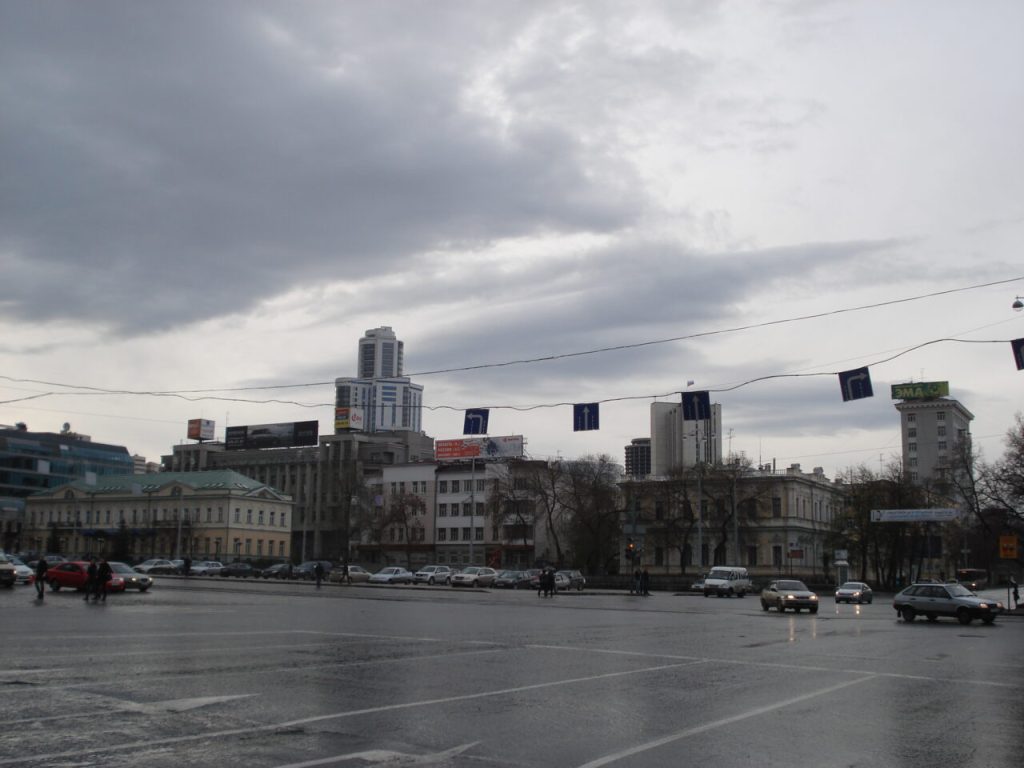
As for real estate prices, it can be said that everything depends on the location and the direction of the windows: if they face a busy street, it means that you will have to put up with noise from outside all the time. Since on the territory of the neighborhood there are both elite new buildings and wooden shacks, here live both rich and poor. The former, of course, are more numerous.

Yugo-Zapadny is located on the territory of Leninsky District and partially touches Verkh-Isetsky District. In its time it was considered elite and now, in principle, remains one of the most suitable for living, as it is chosen by many people: from young people to representatives of the older generation, from single people to couples. The main problem here is the eternal traffic jams during rush hours.
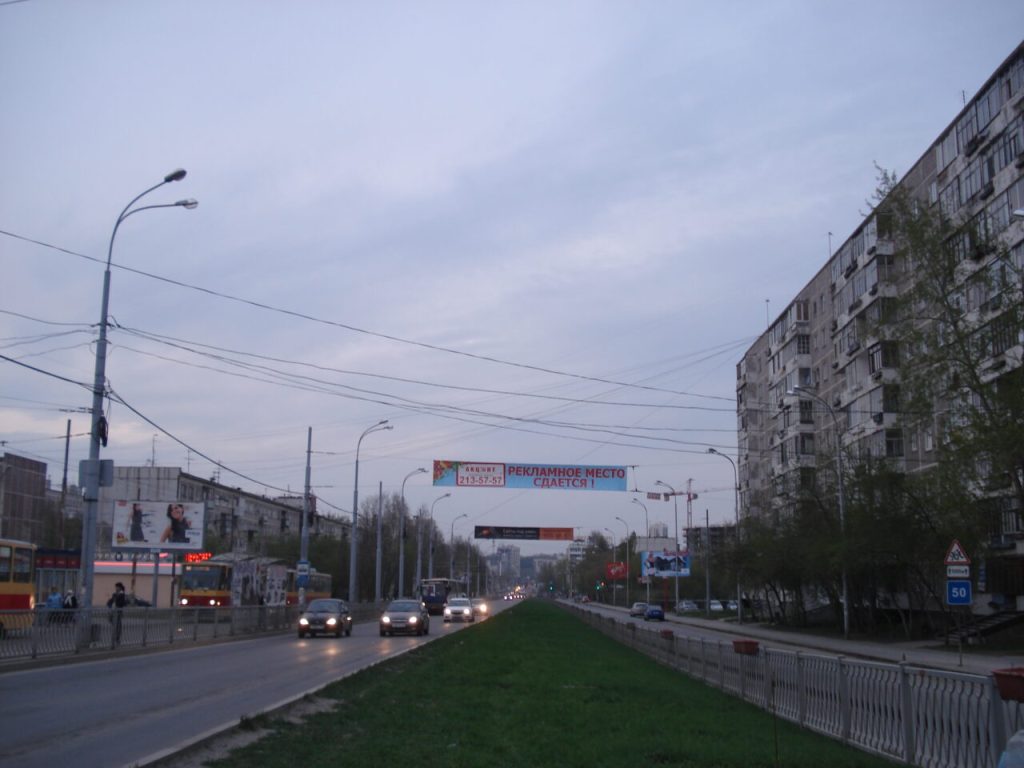
Verkh-Isetsky district
The Verkh-Isetsky district is divided into small parts by analogy with the preceding ones, viz:
- Shirokaya Rechka;
- VIZ;
- Zarechny.
Although Shirokaya Rechka is equated to remote neighborhoods, real estate is not so cheap by average urban standards.
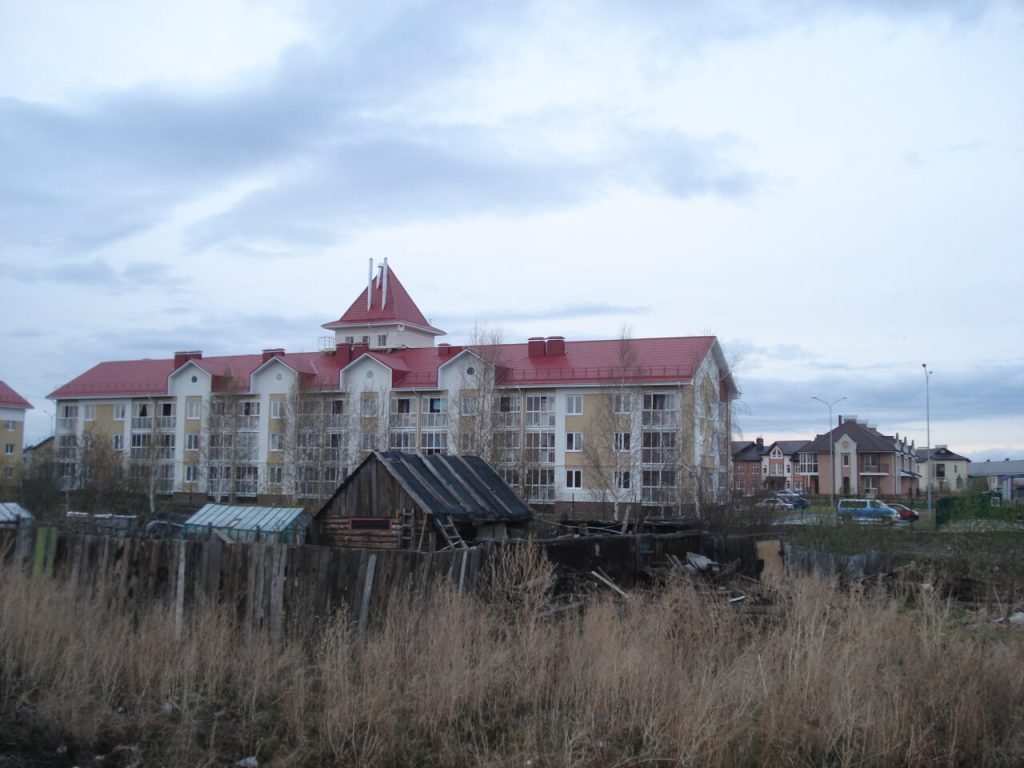
Since the territory is adjacent to untouched nature, it is a success among those wishing to acquire a cottage settlement. However, some areas are heavily polluted, in particular, in the area of the microdistrict there is a landfill that accepts waste from VIZ. Despite this disadvantage, lovers of their own homes are eager to move here, and half of the territory is allocated to the private sector.
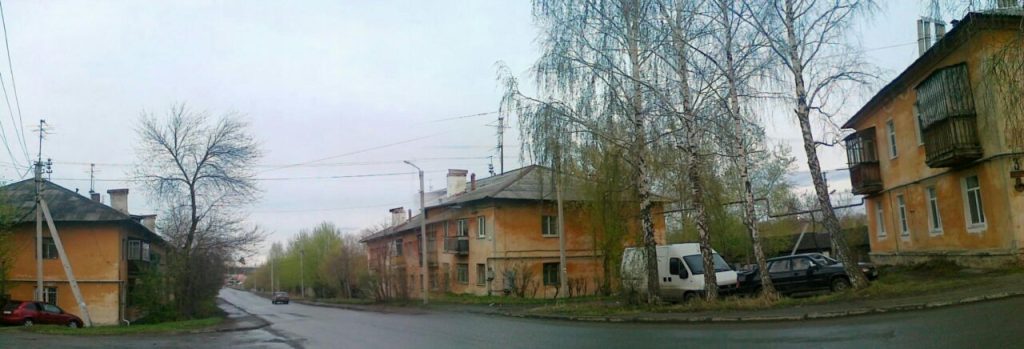
The VIZ microdistrict is the oldest in Yekaterinburg; it was formed around the Verkh-Isetsky Plant, one of the first metallurgical enterprises in the city. The nearby pond was once a real bathing paradise, but industrial effluents poisoned the pond, jeopardizing the ecological situation in the area.
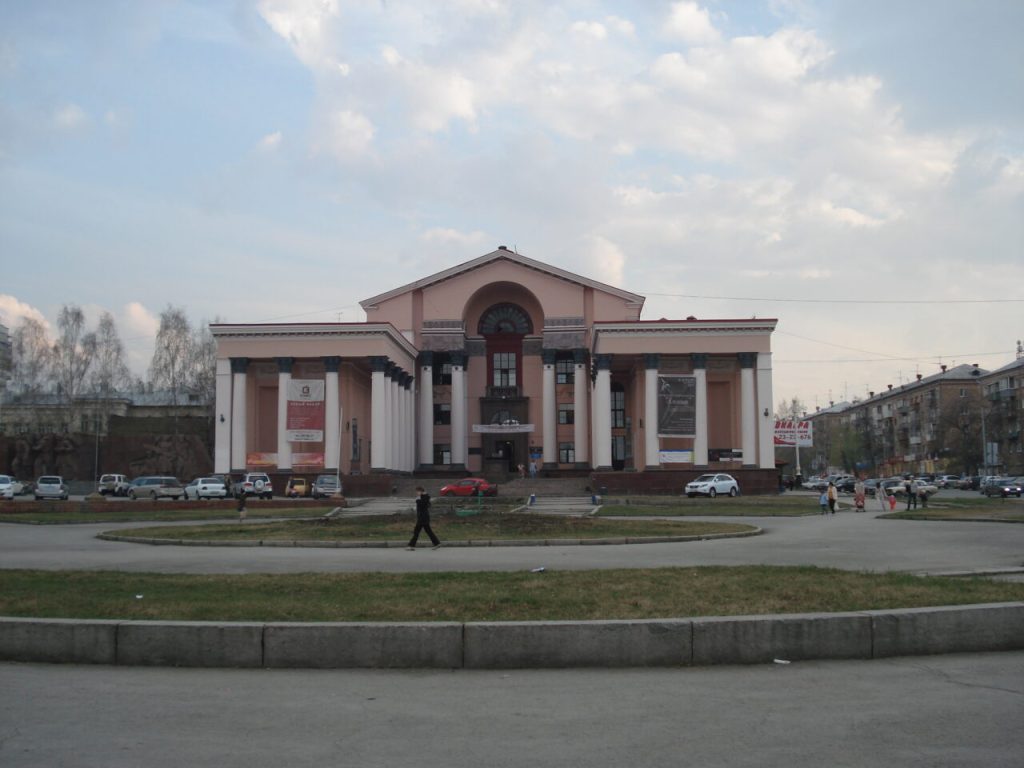
The microdistrict is developing dynamically, new residential buildings are being actively built here, shopping malls and medical centers are opening, new office buildings are appearing. Families with children, young people, commuters and many other categories of citizens flock here. It is here that one of the historical and currently operating city-forming enterprises – Verkh-Isetsky Plant – is located.
Zarechny is located in close proximity to the transportation hub at the junction of several districts. To the north of it there is a bridge connecting Sortirovka and Uralmash. The neighborhood is promising, provided with kindergartens and schools, new houses are being built on its territory. The population is predominantly middle class.
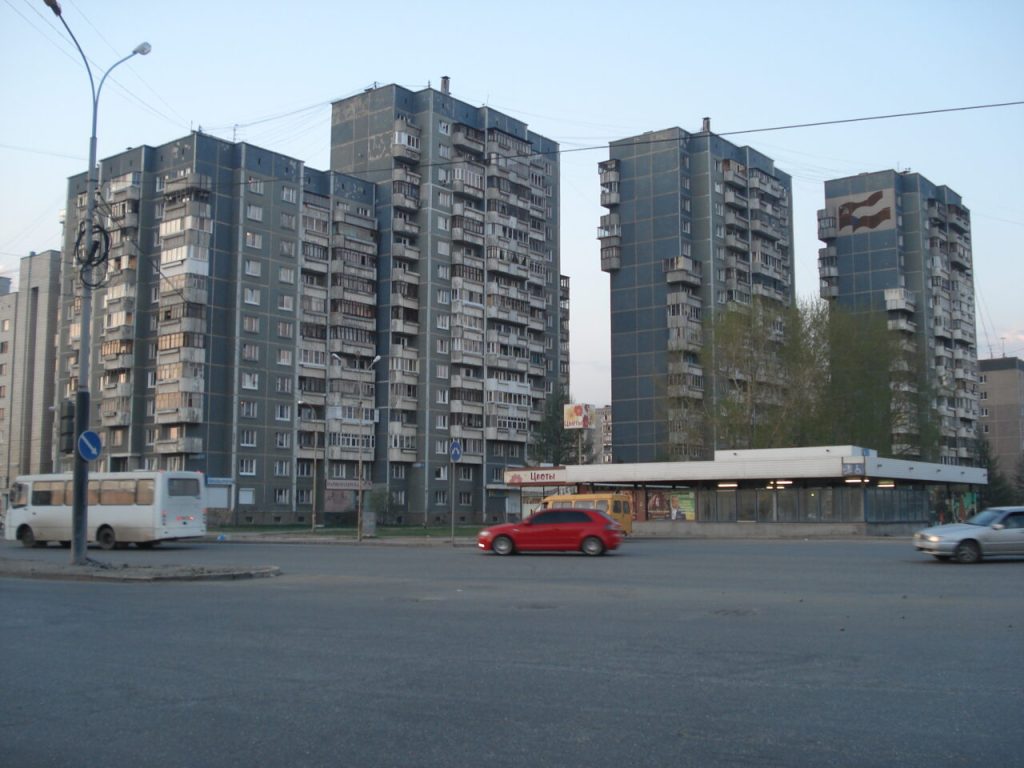
Zheleznodorozhny district
The Zheleznodorozhny district includes:
- Sortirovka;
- Zavokzalny;
- Vokzal.
Staraya Sortirovka is located in the northwestern part of the city, in the east the border runs along Bebel Street. Internally, the neighborhood is unevenly arranged: there are low-rise houses erected in the Stalin-Khrushchev period, there are also new elite new buildings, fenced in. The condition of old buildings leaves much to be desired, dampness for them is a common phenomenon, which entails the appearance of mold, rotting materials, the presence of a characteristic odor. Such buildings are inhabited by the working population of the neighborhood, which cannot afford to improve living conditions.
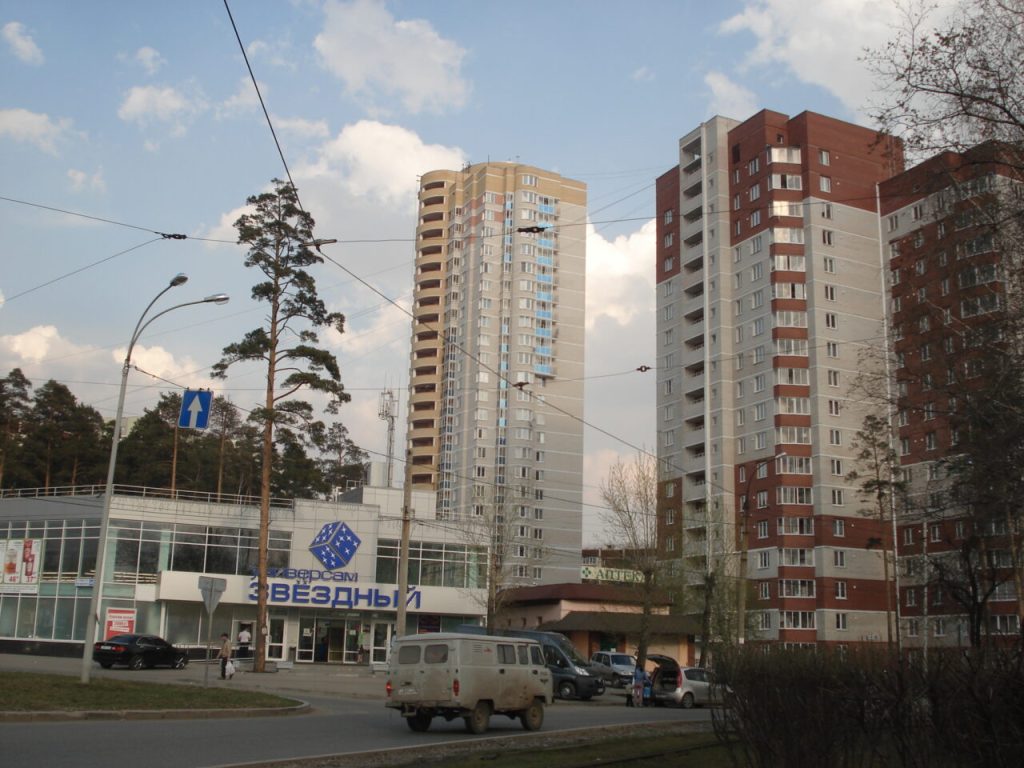
Closer to Bebelya Street, natives of the former Soviet republics and the Chinese, who mainly trade at the city’s largest market, Tagansky Ryad, settle in the neighborhood. In the elite houses, of course, everything is the opposite: only Russian families with a high level of wealth live there. And the intrusion of strangers into their territory is prevented by magnetic locks installed on the entrance groups of the fences enclosing the new buildings. The cost of residential real estate inside the neighborhood differs many times, but here you can find a favorable offer.
Novaya Sortirovka is located on the other side of Bebel Street, closer to Pekhotintsev. The microdistrict is relatively young, at least it was built later than Old Sortirovka, and apartments here are more expensive. The population is made up of able-bodied citizens, and young parents can often be found here.
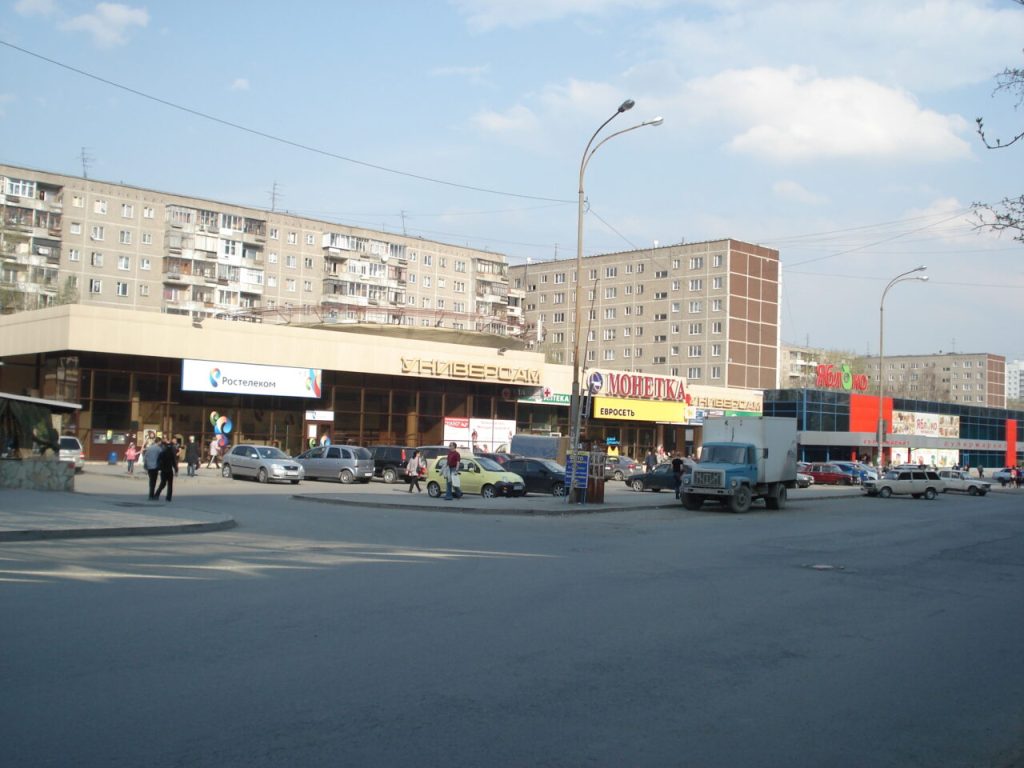
The Vokzal is a densely populated and ambiguous neighborhood of the city. The railroad tracks divide it not only into northern and southern parts, but also into privileged and abandoned territory.
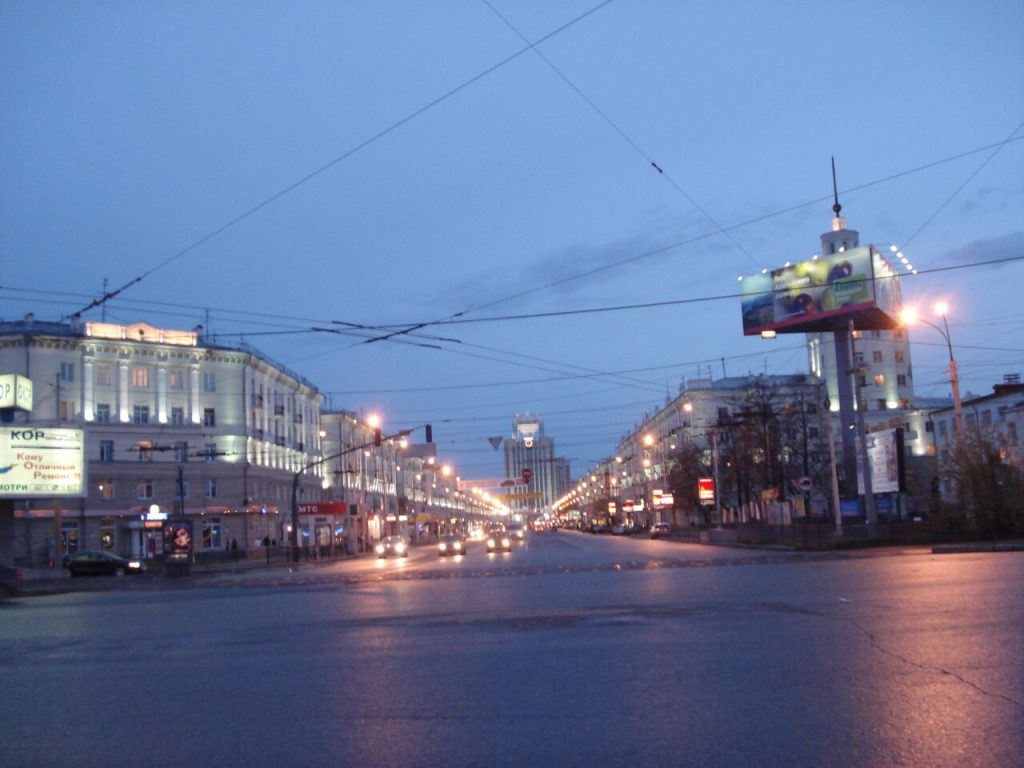
On one side there are elite houses, business centers, hotels, etc., on the other side there are industrial buildings, garages and slums where pensioners and working citizens live. These two parts of the neighborhood are separated from each other, they are connected by a small crossing.
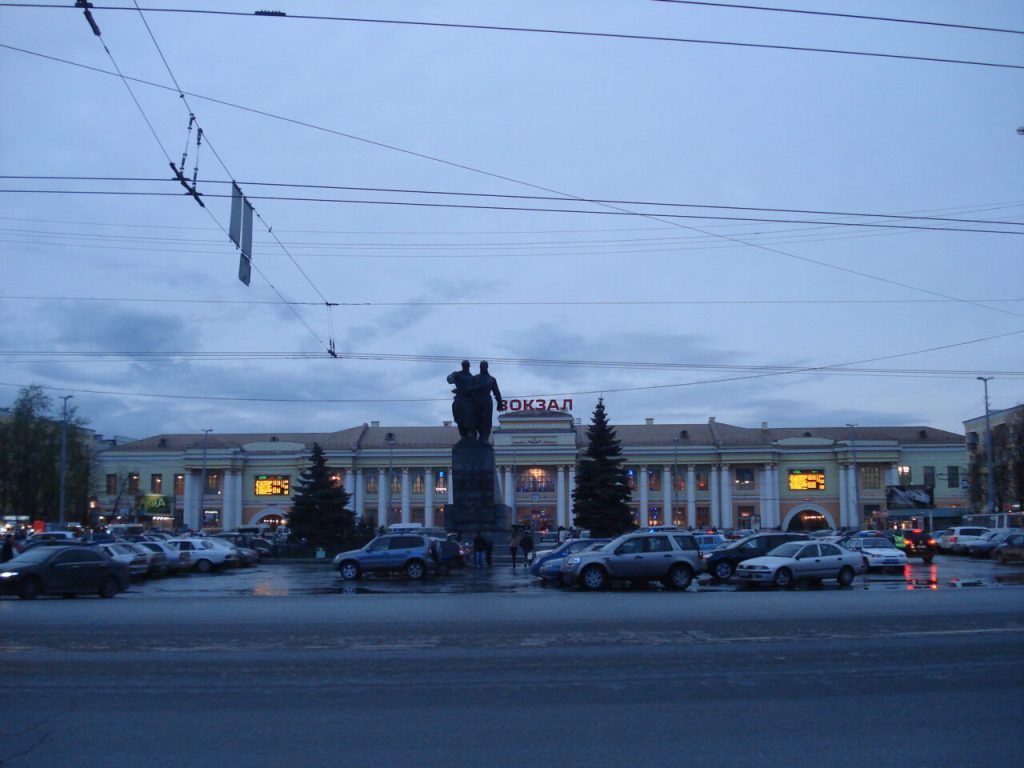
City infrastructure
Housing and utilities lawlessness
Historically, the housing and utilities sector has been the weakest link among all other services in Yekaterinburg. Periodic shutdowns of both hot and cold water, fountains of boiling water, cars going to ground and roads where it is simply impossible to exceed the allowable speed limit – all this is a familiar phenomenon for Yekaterinburg.
Locals have already developed the habit of ignoring such things, which should not bother the central city of the region at all. But newcomers have a hard time at first, especially if they have never encountered such problems before. In fact, the confrontation with utility workers lasts for many years. On the one hand, the services promptly respond to accidents and constantly patch up old holes in the roadway, but not six months as they again make themselves known. And it does not matter whether it was a cosmetic repair or a major repair – the potholes are formed no matter what. It is as if the city is conspired for eternal struggle with road bumps.
The condition of water is also “not good”. Sources of water supply of the city – Volchikhinskoe Verkhne-Makarovskoe water reservoir, and also Verkh-Isetsky pond. However, the life-giving moisture reaches consumers in an ugly condition. Probably, the reason for this is a great wear and tear of pipes, which, by the way, are annually repaired due to their dilapidation. As a result, hot water has a slight tinge of rust. Cold water is a bit cleaner, but it is not possible to drink it normally in all districts, as it can give off chlorine – this is the method of purification adhered to by local authorities. To unfavorable areas in terms of water quality can be safely attributed Staraya Sortirova (Rastochnaya St., Angarskaya St.) and Keramichny (2nd Novosibirskaya St., Bratskaya St.). Citizens in their own way decide to attract the attention of public utilities and refuse to pay for services, the quality of which does not satisfy them or which they cannot use.
Traffic jams
Traffic jams are a common phenomenon in Yekaterinburg. St. Petersburgers and Muscovites are wrong to think that they do not happen in the periphery. They do. And local traffic jams are characterized by one feature: if they happen, it means that traffic stops altogether. Especially terrible is the traffic jam on the streetcar ring near the Iset Hotel at the intersection of Lenin Avenue and Lunacharskogo Street. And also for a long time you can get stuck on the roads of Uralmash towards the center, if one of the exit streets (Cosmonautov Ave. or Bebel St.) is suddenly blocked because of a utility accident, for example. And on a normal weekday at noon, the average speed in the city by car usually does not exceed 15-20 km/h.
All types of transportation are present in Yekaterinburg:
- buses;
- trolleybuses;
- an extensive streetcar network;
- shuttle buses;
- the subway, though it is still proud to be the shortest in Europe (the 8th station was opened at the end of 2011, the escalators have not yet been manufactured for the launch of the 9th station).
The local airline Ural Airlines operates in the city, operating 120 routes.
Businesses and work in Yekaterinburg
Yekaterinburg ranks third among other Russian cities in terms of the number of foreign representative offices, passing Moscow and St. Petersburg and leaving behind Novosibirsk, Nizhny Novgorod and Kazan.
Where to get a job
Yekaterinburg was originally founded as an industrial center, and it still is. On its territory there are more than 200 enterprises, mainly belonging to heavy engineering, tank building, instrument making, metallurgy and chemical industry. The most famous of them are:
- Ural Heavy Engineering Plant (located near I Pyatiletka Pl., Uralmash);
- M. I. Kalinin Machine-Building Plant (bordering Cosmonauts Ave.);
- Ural Transport Machine Building Plant (Uraltransmash);
- Ural Instrument-Making Plant (UPZ);
- Sverdlovsk Electromechanical Plant;
- Russian Samotsveti Jewelry Plant;
- Verkh-Isetsky Metallurgical Plant (VIZ);
- NLMK Vtorchermet;
- Ural Roofing Materials Plant (UZKM);
- Uralplastic Plant.
Each district of the city has its own plant, and often more than one. Despite the difficult transition from command economy to market economy, which occurred after the collapse of the USSR, almost all industrial enterprises “survived”. True, part of the territory was given to private firms, for example, in the former shops of Uralmashzavod now is located Sivar company, producing power cabinets and transformers.
Every neighborhood of the city has its own factory, and often more than one. Despite the difficult transition from a command economy to a market economy that took place after the collapse of the USSR, almost all industrial enterprises “survived”. True, part of the territory was given to private firms, for example, in the former shops of Uralmashzavod now is located Sivar company, producing power cabinets and transformers.
The Bergauf plant, which produces dry construction mixtures, is a promising employer. The company offers a full social package, as well as the possibility of career growth, including the prospect of transfer to another region. Quite standard working conditions along with average wages are the lot of employees of Nizhne-Isetsky Metal Construction Plant. Uralmashzavod offers a five-day working week and a rather low level of remuneration for ordinary employees. However, for the employees and their families there is the Uralmash Culture Center, where various clubs and sections are open. It is possible to get a job at ZAO Energostroy (construction and design of electric power facilities) on a rotational basis. In this case, the company promises to pay only “white” wages, organize corporate events and leisure activities for its employees, provide opportunities for further growth in the profession.
It can be said unequivocally that there is work in Yekaterinburg, and the range of spheres of activity and enterprises is huge. According to the rating of in-demand specialties, the demand for handymen fell from 26 to 13.6%, while catering workers and sales managers became more frequently required. The demand for chief accountants, on the contrary, gradually decreased by 0.41%, which is almost double.
Salary expectations
According to the official portal of Yekaterinburg, the average monthly salary in the city is over 58 thousand rubles.
Trade
On average, there is 1 meter of retail space per resident of Yekaterinburg – the largest indicator in Russia, equal to the European standard. For comparison: in Moscow there are only 750 square meters per thousand inhabitants, and even less in other cities. Approximately half of the retail area is concentrated in shopping centers, and there are 73 of them in total. In general, there are more than 4.6 thousand stores in the city.
The high indicator of availability of shopping centers determines the demand for retail space, which will continue to grow. Now the majority of complexes are located in the central part of the city, in dormitory districts they are also present, but in smaller numbers, but there are only a few outside the city boundaries.
Crime Capital
The crime rate is at a high level, the city has been repeatedly equated to the criminal capital. According to Komsomolskaya Pravda, based on official data, an average of 80 illegal acts per day were committed in Yekaterinburg, among which robberies, robberies, thefts, and murders prevailed. The list of unfavorable districts is traditionally opened by Ordzhonikidzevsky (20.73% of all crimes), followed by Chkalovsky (17.27%), Kirovsky (16.91%), Verkh-Isetsky (15.85%), Leninsky (15.1%), Oktyabrsky (12.68%). Zheleznodorozhny District (1.46%) closes the seven.
The most famous event in the criminal world was the famous meeting of authority figures, which took place on September 15, 2004. And all this was done openly in the middle of the day and in the very center of the city – near the Opera House. It was attended by the State Duma deputies covering the leaders, and was even filmed on TV. However, the criminal top brass did not intend to find out relations between themselves, but on the contrary, they were trying to protect the city from the invasion of foreign groups and to prevent the redistribution of the Urals capital so as not to start a war. However, the initiator of the meeting, Alexander Khabarov, the leader of the Uralmash OPS, was soon taken into custody, and six months later he was found hanged in his cell under more than strange circumstances. There was no investigation into the death of the unofficial leader of the Uralmash group, and the criminal association was soon put to rest, while no redistribution of spheres of influence in the criminal world took place. According to a rough estimate, the turnover of the criminal association corresponded to the regional budget.
The trouble of modern Yekaterinburg is drug addiction. The main place where dope is distributed among the population is a well-known settlement in the southern part of the city. And many people know about it. It is not surprising that this very place attracts the attention of the City without Drugs Foundation, a non-profit enterprise whose activities are aimed at combating the distribution of illegal drugs and helping addicted people. However, there is another version explaining the purpose of the organization’s creation, namely, to assist in ensuring stable drug trafficking. But judging by the results of the activities of the fund, it, most likely, does not correspond to reality and was put forward by the opponents of the organizers of the movement.
Some sights of Yekaterinburg
Plotinka – the main attraction of the city, which is located in the central part of the city. In front of it there is a large stone – a kind of monument, on which every guest of Yekaterinburg considers it necessary to mark. However, the inscriptions are thoroughly erased before big holidays, so it is no longer possible to read the messages left a few years ago.
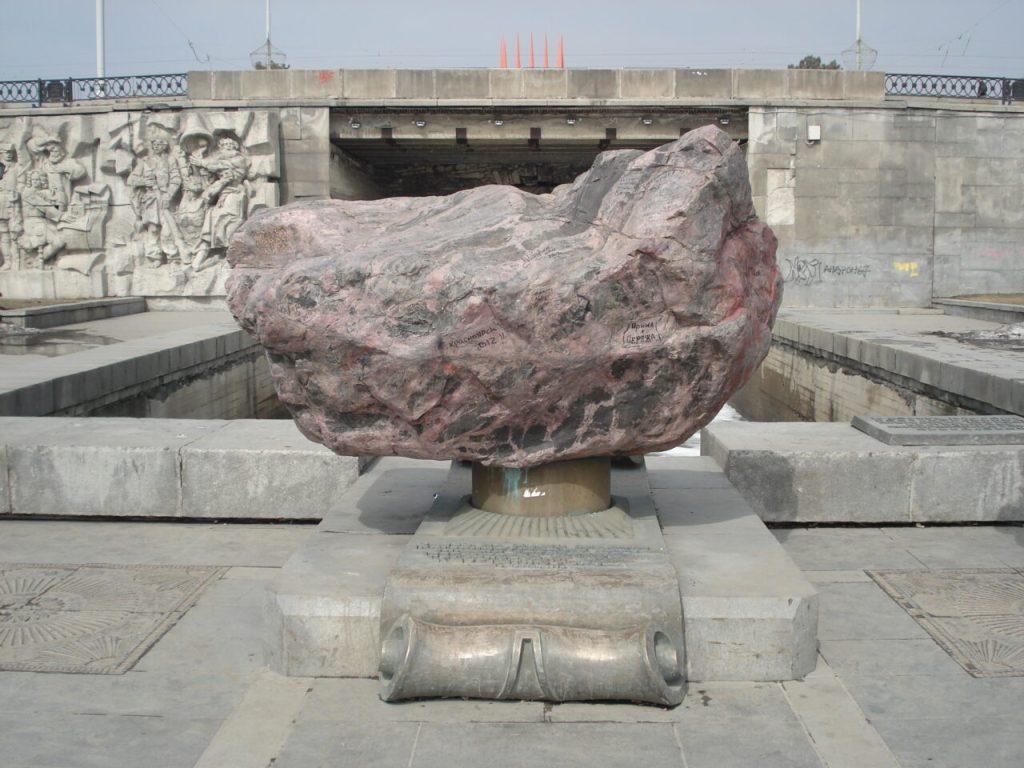
The dam was built in Soviet times, before the revolution there was a simple bridge over the Iset River in this place.
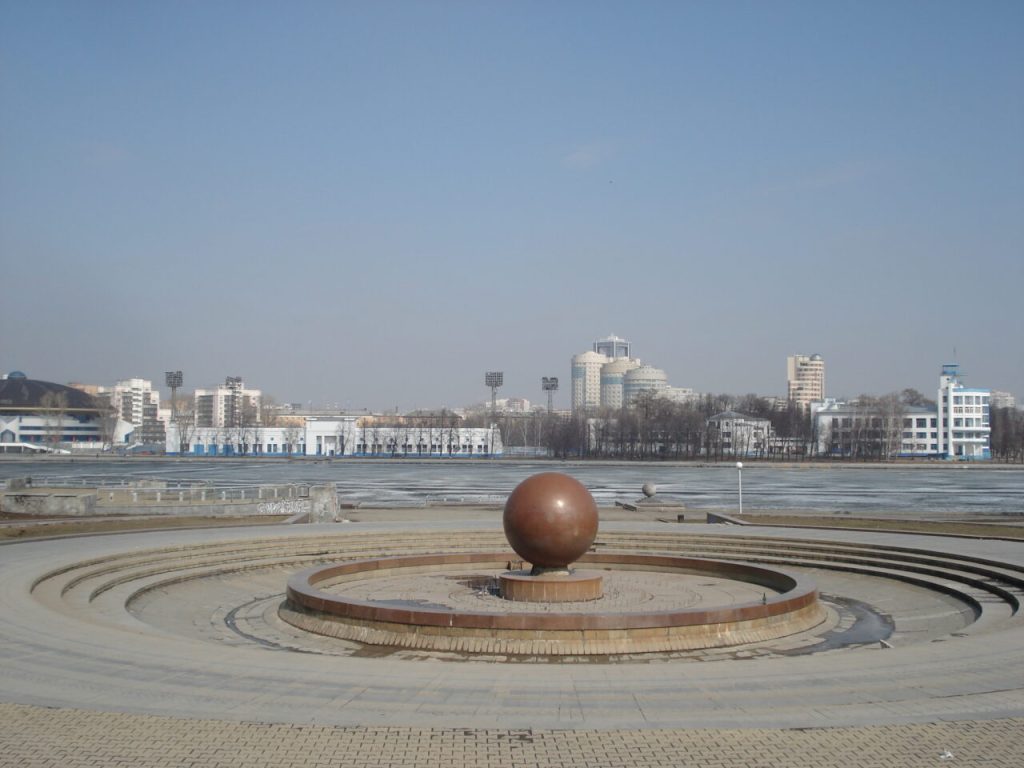
The city pond is located on the other side of the bridge over the Iset River. In its immediate vicinity are the Duma building, the Hyatt VIP hotel, the Academic Drama Theater, and the Cosmos concert theater.
After major reconstruction Vaynera Street became pedestrianized, metal sculptures were installed along the entire length of the arbat.
Artists from all over the world come on tour to the Yekaterinburg circus, and concerts of pop stars are periodically organized here. Behind it you can see the unfinished TV tower, the entrance to which is now bricked up due to numerous attempts of local residents and guests of the city to climb to the top of the tallest object located within Yekaterinburg.
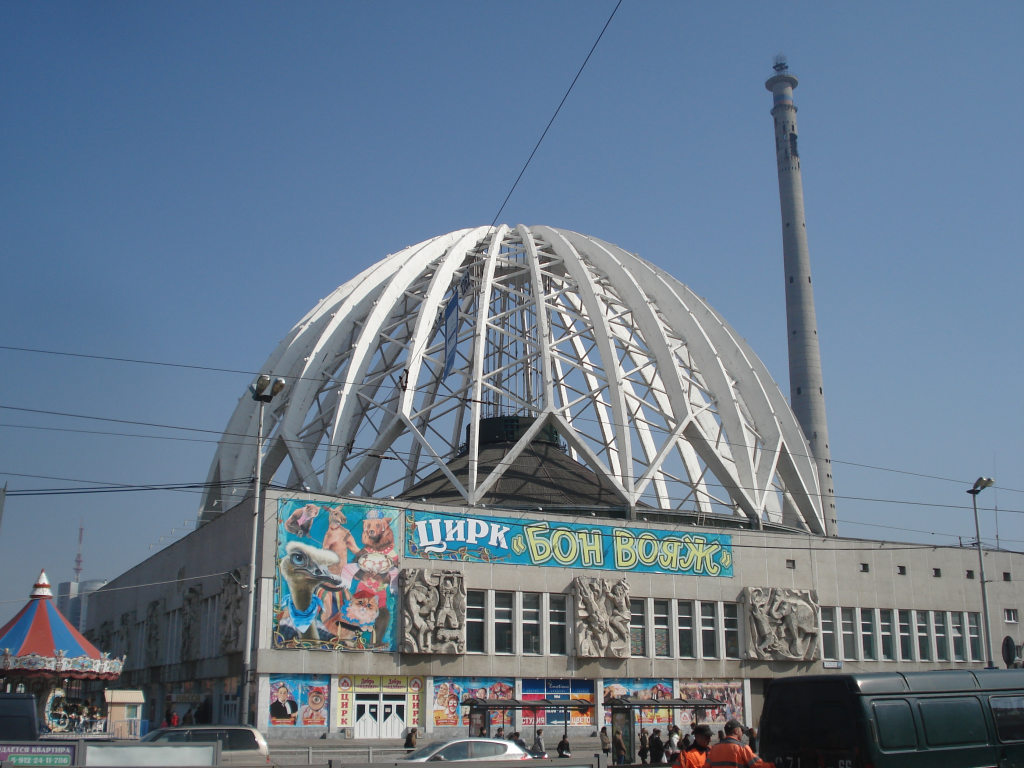
A skyscraper has been built in the center of the city, with an observation deck at the top.
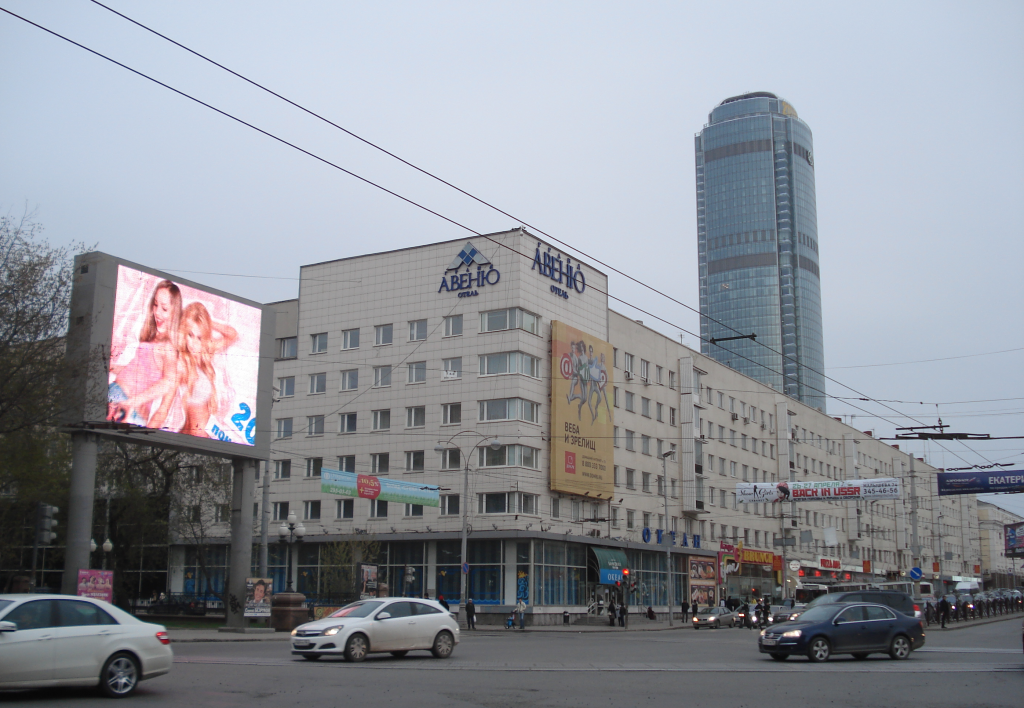
The Temple-on-Blood was established on the site of the execution of the royal family in 1918. There used to be the Ipatiev House Museum, where the bloody drama actually took place, but it was decided to demolish the wooden structure.
Sevastyanov’s mansion, an architectural monument. Located on the bank of the city pond, bordered by Lenin Ave.
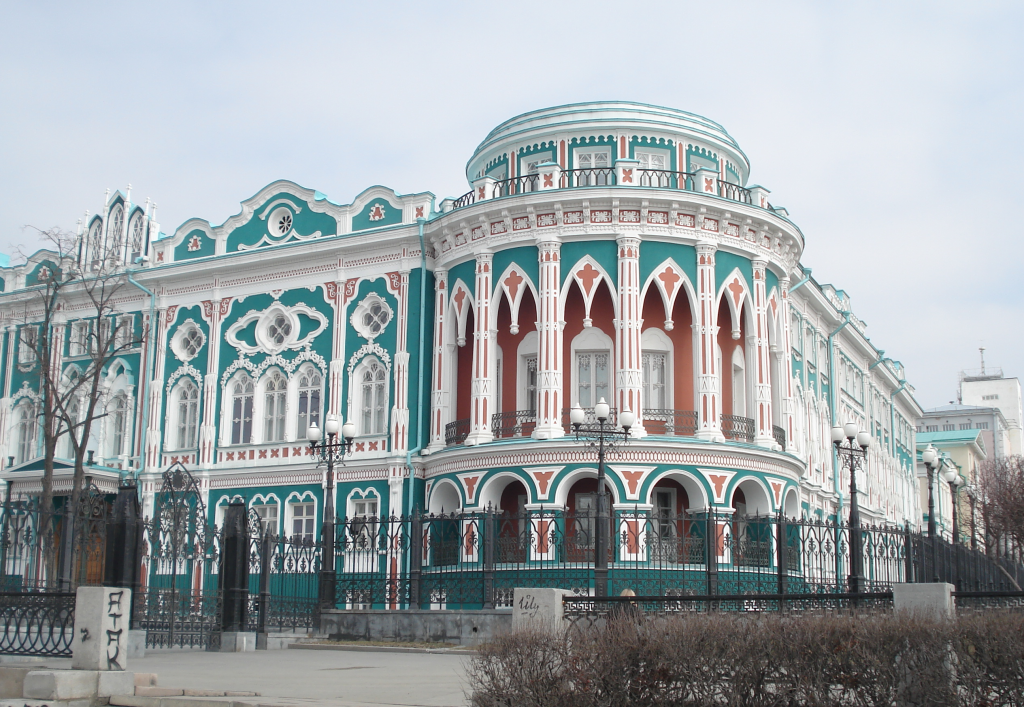
Leisure facilities
Shopping and entertainment centers
- Park-House mall (next to Osnovinsky Park). Traditionally, the last floor is allocated for entertainment area, where there is a movie theater, bowling, children’s game machines, amusement rides, food court with a very scarce menu.
Mega (Metallurgov Street, outside the city) is ideal for those who consider shopping the best way of pastime. On the territory of the complex there are numerous cafes, there is a skating rink, working all year round, a stage for large events. - Shopping and Entertainment Center “Greenwich” (intersection of 8 Marta St. and Kuibyshev St.) strengthens its positions from year to year. The center “grew” from a small by modern standards store “Maria” with a dubious reputation, which, despite the favorable location, for a long time remained unprofitable. Over time, the owner changed, the outlet went to the network “Merchant”, and some time later the company bought a few more floors of the building and organized a shopping center of the same name. Now the largest shopping and entertainment complex in the city is located on this place, although it would be more reasonable to categorize it as a shopping center, because it does not provide much entertainment.
- “Megapolis” – a relatively new shopping mall, offering 5 floors of shopping and entertainment. It is located in the area of the Southern bus station.
- “Yekaterininsky” (beginning of Shcherbakov Street) – one of the first shopping and entertainment centers of the mass-media format. It includes a movie theater, bowling alley, disco, food court, children’s complex (area of 3 thousand sq. m.), conference hall.
- In addition to stores and cafes there are 2 bowling halls and billiards in the shopping mall “Antey”. Here you can watch broadcasts of sports matches.
Cafes, bars, restaurants (more than 600 establishments)
- Emporio Armani caffe (intersection of Malysheva and K. Libknecht) is located in the shopping center of the same name. It was created with the purpose of organizing recreation during shopping for the clients of the complex. The price list is designed for the income above average.
- Il Patio (Moskovskaya Street) is a café of a pizzeria popular in Russia.
- SeaZone is a restaurant in the city center. A favorable place for organizing a romantic dinner.
- Restaurant “Antey” is located in the shopping and entertainment complex of the same name. A popular place among both tourists and citizens.
- Pizza-Mia is a chain of cafes that holds weekly children’s matinees in its establishments.
- Vienna Cafe (building of Atrium Palace Hotel) is designed mainly for city guests and other visitors with income level above average.
- Greenwich Cafe (Greenwich shopping mall) offers Chinese and Japanese cuisine.
- The bar “Dr. Scotch Pub” serves mainly English cuisine and has a wide choice of hot drinks.
Night clubs (37 establishments)
- The art club “Podvale” (Moskovskaya Street) is considered to be a gathering place for socialites. Mini-concerts are periodically organized here.
- Under the disco in the entertainment center “Luna-2000” (Sibirsky trakt) is a small hall, but it has a bar, a mini stage, tables with sofas. You can have a rest from music in the bowling hall on the first floor.
- Parkking is a club in the basement of the shopping mall “Antey”, designed for students and youth. There are 2 halls inside.
- Tele-Club is an ordinary covered hangar located on the outskirts of the city (Karyernaya street). Its main advantage is capacity, thanks to which the club managed to “rise”. And indeed, it constantly organizes concerts of popular artists and emerging bands.
Additional
- Aquapark “Limpopo” (the beginning of Shcherbakov Street) although small, but is popular. In addition to slides, it provides a bathing complex.
- CPKiO borders with the park district. Here work different attractions designed for children and adults. You can go with a child on excursions, shoot in the shooting gallery, ride on carousels. On the territory of the park are organized the largest in the city rock concerts and other mass events. There are extreme attractions (roller coasters, swings rotating in 3 planes, etc.).
- Circus (m. Geologicheskaya station) constantly arranges performances and organizes tours of famous artists.
- Yekaterinburg Zoo (intersection of Mamina-Sibiryaka St. and K. Marx St.) works both in winter and summer. The city does not have its own elephant, but the animal is periodically brought from other zoos, so you can catch the moment. There are benefits for certain categories of citizens.
- In Yekaterinburg there are several theaters of different orientation – the Sverdlovsk Academic Drama Theater, the State Academic Opera and Ballet Theater, the Young Spectator Theater, the Chamber Theater of the Museum of Ural Writers and others. Accordingly, there is a wide choice of performances for every taste. There is also a student theater at YSTI, where you can get in for free.
- Alleyka is a place to sell souvenirs and works of art. Originally it was located on the alley along Lenin Ave. Lenin Avenue, hence the name. However, the local authorities asked the traders to stop working during the reconstruction of the part of the street, and thus forced to organize a spontaneous trade opposite the circus. The reconstruction is long over, and no one has returned to the former place. On the alley you can buy a painting, order a portrait, buy souvenirs, old moments, antiques and related trifles.
Events
- City Day is always celebrated on the third Saturday in August, although the historical date differs slightly from the generally accepted date.
- Advertising Eaters Night is organized once a year. Movie theaters start showing funny commercials collected from all over the world.
- Night of Museums is a traditional event. It is organized mainly in spring, mostly in May. During the night you can go around the main museums of the city (and there are a lot of them) and pay less than for visiting each object separately.
The city’s mishaps
- After the introduction of a single cara for payment for travel in the subway (7 stations), its cost was 8.7% higher than the price of the St. Petersburg BSC. Moreover, the transportation card of the Northern Capital covered travel not only on the subway (more than 60 stations), but also all ground transportation, excluding shuttle buses.
- Fare in minibuses in many cities is more expensive than a ticket for public transportation. This was the case in Yekaterinburg until the authorities decided that commercial transportation should not charge more than public transportation for its services. Then the owners of the city’s cab network made a “horse move”: they unanimously made the fare lower than the city’s standard: instead of 14 rubles, they charged only 12 rubles (up to that point, the fare in minibuses cost 20 rubles). As a result, the citizens began to ride commercial buses more, and the state enterprises had to suffer even more serious losses.
- The name of the railway station “Sverdlovsk-Passazhirsky” has long misled other Russians who boarded trains formed in Yekaterinburg. The thing is that the exact name of the final destination is written in the ticket, and when the train was delayed, they sometimes announced “the train coming from Yekaterinburg…”. And not everyone knew that the station “Sverdlovsk” was located in Yekaterinburg.
- Despite the fact that sewage water is thrown into the central river of the city – Iset, some citizens can be caught fishing in the dirty waters. I wonder what they are trying to catch there? Another four-eyed mutant?
- The city train is a special kind of transportation. It is like a ghost: everyone knows that there is such a phenomenon, but few people are in the know regarding its route.
- In 2008, during the excavation of paving stones in the central part of the city were found burial XVIII century. However, not all the remains were raised to the surface, it was necessary to prepare the square for the celebration of the City Day and everything that was not raised in time was buried back. Apparently, the archaeological works decided to postpone until a better moment…..

